- Compare Providers
- Review Providers

Starlink Roam Is Here, but Is It Worth It?
The latest iteration of Starlink’s portable internet is a bit of a mixed bag
Starlink customers now have the option to change their plan from the standard residential plan to the new Starlink Roam, which allows customers to take their dish with them and connect to the internet anywhere they go. While this sounds like a great deal for the modest price increase, there are actually a few differences between the plans once you get into the fine print. Depending on how you use your Starlink connection, some of these technical details might even be deal breakers.
We’re going to walk you through these details so you can decide whether Starlink Roam is right for you or not.
Are you looking for a more flexible internet plan? Enter your zip code below to see what options are available in your area.
What is Starlink Roam?
Starlink has been working for a while on a portable satellite system. This program has gone through several iterations—Starlink Portable, Starlink RV, and now Starlink Roam. Starlink Roam replaces these previous plans, which are no longer available in the U.S.
Starlink Roam can be used with the new Flat High Performance Starlink equipment, which, in conjunction with a Priority Mobile service plan, allows for in-motion use . This means that you can install your dish on your vehicle, and it will provide internet access within the vehicle while you are driving. (This feature is not yet available for Starlink Roam Global plans.)
You can also switch to Starlink Roam while continuing to use your standard Starlink equipment. This will allow you to take your dish with you and get internet access at your new destination, but it won’t work while you are on the road.
Starlink Roam also allows you to pause your service at any time, which means that you can get a Starlink Roam plan to use when on vacation in the summer or fall and turn it off during the rest of the year when you don’t need it. Starlink Roam is billed in flexible one-month increments, so with a bit of planning, you can pause your service in the months you won’t be needing it and reactivate it for the months when you’ll want to take your internet on the road
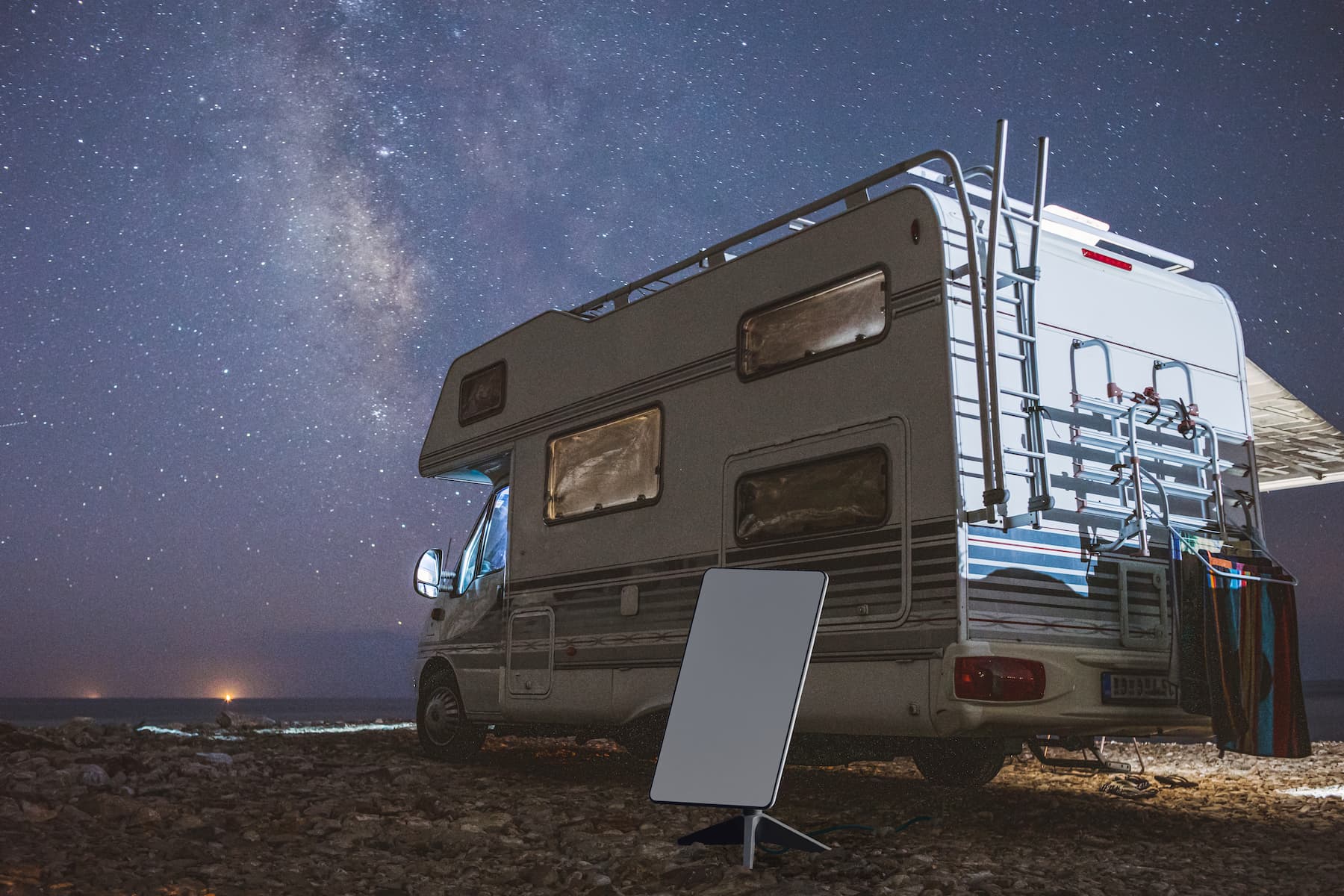
Starlink Roam comes in two different plan options: a regional plan that costs $150 per month and a global plan that costs $200 per month. You can also upgrade your service plan to Priority Mobile for an additional $250. Standard Starlink equipment has a one-time cost of $599, while the new, Flat High Performance equipment costs $2,500. In-motion use requires both the Flat High Performance equipment and Priority Mobile service.
Starlink Roam vs. Starlink Residential
In addition to portability and cost, there are some important technical differences between the different Starlink plans that impact their practicality.
Data as of 2/15/2024. Offers and availability may vary by location and are subject to change.
*Plus hardware, shipping & handling fees, and tax. Fully refundable. Depending on location, some orders may take 6 months or more to fulfill.
The big differences between the plans come down to cost, speed, portability, and service plan.
Starlink’s basic plan is pretty pricey, but are mostly on par with other satellite providers like Viasat and Hughesnet . The additional cost for Starlink Roam pushes those prices to some of the highest you’ll see with any residential internet plan. The Global version of the Starlink Roam plan will almost double your monthly internet bill. As such, you definitely want to make sure you’re going to get your money’s worth before switching over.
Although Starlink’s incredibly low latency is its biggest advantage over traditional geosynchronous satellites, its high download speeds were another big selling point early on. These optimistic estimates were scaled back as Starlink struggled to manage its growing network, with its current residential speeds falling between 20Mbps and 100Mbps.
Roam plans have slower speeds, topping out at a max speed of 50Mbps. This means that customers who upgrade to a Roam plan can expect speeds of around half of what they were getting before.
Portability
The big selling point of Starlink Roam is the ability to take your internet with you wherever you go. The Regional plan allows you to go anywhere on the same continent, which for U.S. customers, would allow you to take your dish to Canada, Mexico, and some Central American countries. The Global plan, on the other hand, should allow you to go anywhere in the world. There are, however, some restrictions.
If you spend more than two months in a foreign country, you must transfer your account to that country to maintain service. Also, many countries lack Starlink ground stations, which means that even though your dish can always find a Starlink satellite, those satellites might not be able to see a station to connect to the rest of the internet. Fortunately, Starlink’s new satellites all feature optical intersatellite links which can bounce your signal around until it can reach a ground station, but this means that your connection in these areas will be much slower and have much higher latency than normal.
Service plan
Just after the launch of its Roam plans, Starlink got rid of its data caps in favor of a three-tiered system of service plans. It has since simplified this system slightly by combining its plans and data together on its website, though it’s still not the most intuitive system.
Starlink Roam Regional and Global are now both options under the Standard Mobile service plan, which has the lowest priority on the network. When your connection is deprioritized, the network will deal with all other traffic first, then, if it has any additional bandwidth, it will try to get you the information you’re waiting for. This means that speeds can be slower than expected, especially during peak hours.
Deprioritizing traffic is exactly what happens with other satellite providers when you exceed your data cap for the month , so the current system of service plans is a roundabout way of implementing data caps without calling them data caps. Still, since the Mobile plan is technically a normal plan offering and not a throttling of your normal connection, you should still be getting speeds above Starlink’s advertised minimum speed, even if they are on the low end.
If you want the portability of Roam but don’t want to settle for low speeds, you can upgrade to the Priority Mobile service plan, which will move your connection from lowest priority to highest priority on the network. Mobile Priority has all the features of the Global plan, with the added benefit of in-motion use, priority support, and, of course, network priority.
Unlike the default Mobile plan, however, Priority Mobile data isn’t unlimited, and must be purchased in blocks of between 50 GB and 5 TB (5,000 GB). Priority Mobile customers can also opt-in to be charged by the gigabyte for any data used above their purchased allotment to ensure that they don’t lose their priority status. As mentioned, in addition to the Flat High Performance dish, Priority Mobile data is also required to use Roam’s in-motion feature.
Starlink has since added in-motion service below 10mph as a feature of the standard Mobile data plan, which is an odd choice. Since you can’t exactly strap a satellite dish to your bicycle nor idle your car all the way to work, my assumption is that this is simply a bug that they’ve chosen to call a feature. Much like trying to fool Pokémon go by driving really slowly, I suspect that Starlink has a hard time telling if you’re moving unless you’re going at least 10mph. Since they can’t fix the problem, they’ve decided to advertise it as a perk. Yay!
Starlink Roam comes with some pretty nice features, but it also comes with a lot of drawbacks. Lower speeds, deprioritized connections, and supplementary data purchases can be deal breakers for professionals who use Starlink to work from home, though Roam’s flexible month-to-month payment plan can make it a viable (if somewhat expensive) secondary internet service for travel. Of course, the need for a separate, primary internet connection makes switching to Roam a risky choice.
How to switch to Roam (and also maybe don’t)
For current Starlink customers, switching to Starlink Roam is incredibly easy and can be done from your Starlink account:
- Log into your Starlink account.
- Under Your Starlinks, find the plan you want to change and click Manage.
- Select the pencil icon next to Service Type.
- Change your subscription to Roam and accept the new terms and conditions.
This will allow you to take your dish with you when you travel and set it up in a new location. This also changes your monthly bill and download speed to those of a Roam plan and removes the priority access you got with your residential plan. Changing your plan online will not give you access to in-motion use, as you will need to update your equipment to a Flat High Performance dish to make use of that feature.
One important detail to note is that while customers can switch from Residential to Roam, they cannot change back to Residential. If you’ve been using your standard Starlink plan or even a Starlink Portable plan to work from home and decide to try out Starlink Roam, you’re stuck with slower speeds and Best Effort connections. If this doesn’t work for you, you can’t switch back. Your only option is to buy another Residential plan and dish like a new customer, which could take months to arrive.
Do you need a new internet provider in a hurry? Enter your zip code below to see what’s available in your area.
We generally advise people who really want Starlink Roam to buy it as a second plan, rather than switching their current plan over to Roam. If you are thinking about switching over, make sure that you know exactly how much speed you need .
These more important internal links don’t stand out as much with all the external reference links we have to include now.
Ordering Starlink Roam as a secondary connection
Although Starlink Roam has a lot of deficiencies as a primary household internet connection, it has a lot of potential as a secondary connection for travel. Many people use mobile hotspots or portable 4G routers when traveling in order to ensure a reliable internet connection wherever they go. Starlink Roam is a hotspot on steroids. Whereas most hotspots rely on 4G or 5G networks, which have limited coverage, Starlink’s low-Earth Orbit (LEO) satellite network gives you coverage even in the most remote locations.
Starlink Roam vs other portable internet
†30-Day Service Trial Included with purchase of Gateway.
Starlink Roam’s monthly cost certainly puts it on the high end when compared to hotspots and portable 4G plans, though its speedy performance certainly justifies the cost.
The initial cost of the equipment, on the other hand, is a bit much for a secondary internet connection. At $599, the standard Starlink dish is almost twice the price of some of the most expensive mobile hotspots, and the $2,500 Flat High Performance equipment is a massive investment for most internet customers. Starlink Roam is an undeniably cool bit of tech, but it definitely comes at a premium.
One advantage that Starlink Roam has over many other mobile internet providers is its flexible billing system that allows you to pause service. When paused, you are not charged for service that month. Your Starlink Roam service is charged in full-month increments and isn’t pro-rated, so you do have to plan ahead to make the most of your service. Still, this gives an incredible amount of flexibility to those who do a lot of traveling during certain times of the year.
The other big downside, of course, is Starlink’s struggling logistics. Standard Starlink equipment orders still have long wait times, whereas the new Flat High Performance equipment is currently available for order only in select areas. Again, these shipping delays aren’t so bad if you already have a primary internet connection for your household, but can be pretty difficult to deal with if it means going without internet for months on end.
The bottom line
Starlink Roam is an impressive bit of technology, but its shortcomings make it hard to recommend over the standard Starlink Residential plan. It makes for a powerful secondary internet plan for travel, if the large upfront investment is worth it to you, but we don’t recommend it for your primary household internet plan.
Starlink Roam FAQ
Can starlink roam be used on a moving vehicle like an rv or a truck.
Yes, Starlink Roam can be used in-motion, but this requires the Starlink Flat High Performance dish, which costs $2,500. In-motion use is not yet supported by Starlink Roam Global plans.
Is Starlink Roam the same as Starlink Portable?
Starlink Roam and Starlink Portable were two different plans. Starlink Roam has lower download speeds and is limited to Best Effort network access. Starlink Portable is no longer available in the U.S.
Where is Starlink Roam available?
Starlink Roam can be ordered in any country where Starlink is available. Regional plans are available for land use within the continent where you sign up, and Global plans are available in any country across the globe. Starlink access at sea requires a separate Starlink Maritime plan.
Can I upgrade my current Starlink plan to a Roam plan?
Yes, although since Starlink Roam plans are deprioritized and have lower download speeds, we don’t suggest upgrading your primary household plan to Roam.
How does pausing Starlink Roam work?
Starlink Roam can be paused or unpaused from your Starlink account page. When paused, you are not charged for service that month. Your Starlink Roam service is charged in full month increments and isn’t pro-rated, so any month you use it, you will be charged for a full month’s service.
Author - Peter Christiansen
Peter Christiansen writes about satellite internet, rural connectivity, livestreaming, and parental controls for HighSpeedInternet.com. Peter holds a PhD in communication from the University of Utah and has been working in tech for over 15 years as a computer programmer, game developer, filmmaker, and writer. His writing has been praised by outlets like Wired, Digital Humanities Now, and the New Statesman.
Related Posts

- Home Internet
New Starlink Feature Lets You Travel With Your Internet Service for an Extra $25
Elon Musk's internet provider will let customers temporarily move service without changing their address.

- Master's degree in environmental journalism

Starlink customers can now temporarily move their internet service without changing their service address.
Starlink , the satellite internet provider from SpaceX, now lets customers move their internet service around the country for an additional $25 a month. Portability mode "enables users to temporarily move their Starlink to new locations in order to receive service anywhere within the same continent Starlink provides active coverage," the company said on its website .
Starlink warns that customers operating from their service address will receive priority, which means customers using portability mode may experience slower than normal speeds or interrupted service away from their service address. Portability mode doesn't let customers use the internet while they're in motion, such as while driving down the road.
While portability mode allows users to move around the continent, if they operate their Starlink internet service for more than two months in a foreign country, they'll need to change service addresses. People who move permanently will still need to change their service address, too. Service is also limited to areas where Starlink's service is active .
Locating local internet providers
The $25 charge for portabiity mode is on top of the monthly service fee, which recently increased from $99 to $110. New customers will also need to pay a onetime equipment fee of $599.
- Starlink Explained: Everything to Know About Elon Musk's Satellite Internet Venture
- HughesNet, Viasat and... Elon Musk? Satellite Internet, Explained
- SpaceX Starlink Internet Has 150,000 Daily Users in Ukraine
SpaceX Starlink for RVs has arrived, here's what you need to know

SpaceX's Starlink satellite broadband division is now selling Starlink for RVs, but it won't work on the move, and other Starlink users might take priority.
Starlink for RVs is available for those who want Starlink while traveling to areas with slow or no broadband alternatives. The hardware costs $599 while the monthly service costs $135. US consumers also need to pay a $50 shipping fee plus state taxes. European consumers need to pay €634 for the hardware, €71 in shipping, and €124 a month for the service.
SpaceX and Tesla chief Elon Musk announced availability of Starlink for RV via Twitter today but explained that the antenna is "too big for cars" and thus only suitable for RVs, camper vans and other large vehicles.
- The best 5G laptops: Samsung, Lenovo, and more lead with 5G connectivity
- How to test your internet speed the quick and easy way
- The top 5 VPN services: How do these VPNs compare?
- Why is my internet so slow? 11 ways to speed up your connection
It also won't work while you are in motion, the company notes: "We do not support Starlink use in motion at this time. Using the Starlink Kit in motion will void the limited warranty of your Kit. While our teams are actively working to make it possible to use Starlink on moving vehicles (e.g., automobiles, RVs, boats), Starlink is not yet configured to be safely used in this way."
SEE: No, Elon, Twitter will never be a platform for 'Free Speech'
Starlink for RVs customers can expect high-speed, low-latency internet in areas marked on Starlink's RV maps as "Available". These currently include much of North America, larger EU nations and Britain, and the southern half of Australia, and New Zealand.
However, users will experience "notably slower speeds during hours of peak usage in areas marked as "Waitlist" or during events with many collocated users."
Starlink for RVs should offer between 50 Mbps to 250 Mbps download speeds, and between 5 Mbps to 100 Mbps download speeds in congested areas.
There are some differences between the "portability" option available to residential Starlink users that have a registered service address. Portability, which launched earlier this month, costs an extra $25 a month on top of the $110 standard fee, and might be subject to service degradation if it's used in congested areas.
Network resources for Starlink for RV, on the other hand, are "always de-prioritized" compared to other Starlink services, "resulting in degraded service and slower speeds in congested areas and during peak hours," Starlink notes in a support page .
"Stated speeds and uninterrupted use of the service are not guaranteed. Service degradation will be most extreme in "Waitlist" areas on the Starlink Availability Map during peak hours. See Starlink Specification for expected performance here."
There's no current waitlist for Starlink for RVs in markets where the service is available.
For the first time, Waymo self-driving cars are delivering Uber Eats orders
Copilot in microsoft 365 adds new ai perks and here's how to get them, the best portable power stations for camping: expert tested.
Starlink review: Expensive and still short of its promise
The basic satellite internet service isn't as fast as musk promised, but it now offers tiered service — for a price.
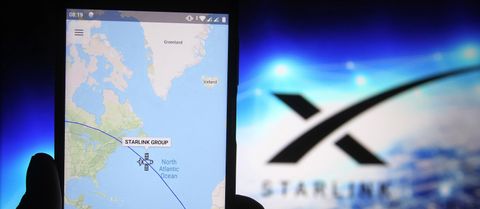
Tom's Guide Verdict
Elon Musk's Starlink can be a godsend in remote areas lacking broadband access, but it is expensive, still suffers from hiccups, and hasn't delivered on its initial speed promises.
Broadband access for remote locations
Simple setup
Solid Wi-Fi router included
High monthly fee
Sporadic connection
Why you can trust Tom's Guide Our writers and editors spend hours analyzing and reviewing products, services, and apps to help find what's best for you. Find out more about how we test, analyze, and rate.
Originally touted as the savior of rural broadband Internet access — and now making headlines supporting Ukrainian communications against the Russian invasion — Elon Musk's Starlink satellite Internet service is the only game in town for many remote users. But that lack of competition may have made the service provider complacent, our tests show, with lagging download speeds and continuing glitches.
We originally tested Starlink in early 2021, when it was still in beta. Since it has long been out of beta and now touts increased coverage, we decided to retest Starlink to see if we needed to revise our initial impressions. With more than 3,000 satellites in low earth orbit, Starlink has been in full service for roughly a year — plenty of time to sort out groundstation software issues and squash any bugs. Unfortunately, in spite of Starlink's potential, we found the service still wanting.
Starlink review: Price and availability
The initial outlay for the required hardware is now $599 — $100 more than the original $499 price (plus shipping and taxes). And the basic monthly Internet service now costs $110 versus the original $99 a month. For our testing and review, we used the basic $110 service and original round satellite dish.
Also new are several additional tiered services. For those who travel or have multiple homes and want to take their Starlink dish with them, there's a $135 a month "active" service that covers you for any area Starlink currently services (that's much of North America, Europe, Australia, and parts of South America). It's aimed at peripatetic RV owners on the road. There's also a business service with a higher gain antenna and speeds of up to 350 Mbps; the hardware for businesses costs $2,500 and the monthly service is a whopping $500 a month.
Starlink is also looking to increase revenues by offering commercial maritime and aviation service. The maritime version is $5,000 a month with a one-time hardware cost of $10,000. Royal Caribbean announced last summer that it plans to add this Starlink Internet access on some of its cruise ships. The aviation version is also aimed at commercial carriers starting in 2023 with a "if you have to ask, you can't afford it" starting price of $12,500 a month.
In November 2022, Starlink announced that it will bring a 1 TB data cap during peak hours (7AM - 11PM); customers who go over this limit will have their satellite internet service throttled or have to pay extra for Priority Access.

Starlink's promise was to deliver broadband Internet service to underserved areas. In many parts of the United States — let alone parts of the developing world or those under attack by Russia — there is either no or very poor Internet access. In our bucolic Vermont testing spot, for example, there is no cell service and no optical fiber (and until recently no cable service). And 5G doesn't help. The towers have to be too numerous to bounce signals around the mountains, and the lower frequency version of 5G that gives you more distance simply isn't fast enough. Hence the appeal of Starlink's service.

Starlink uses a network of satellites in low earth orbit to bring the signal down to you. As of September 2022, there were more than 3,200 tiny Starlink satellites aloft, but the company wants to send thousands more into orbit to blanket more of the globe.
Unlike Dish or DirecTV birds, these are not geosynchronous or geostationary satellites that sit at a fixed point above the earth. So the Starlink dish for residential customers has to be able to move automatically should it need to realign itself to pick up a new satellite. But the big advantage Starlink has is that by using low-earth orbit satellites, which are about 340 miles above the earth, it substantially reduces the signal delay or latency, especially when compared to DirecTV satellites, which sit over 22,000 miles above the planet.
Starlink initially promised that it would expand to "near global coverage of the populated world in 2021" but according to its online coverage map service is confined to North America, Europe, most of Australia, Chile, and parts of Brazil. Our tests were once again conducted in southern Vermont.
We should note that Starlink continues to launch satellites into low-earth orbit. So coverage could expand. Indeed, there have been reports that some government officials have inquired about delivering Starlink internet access to places like Iran where access is restricted by the local government.
Starlink review: What’s included

Everything you need to get Starlink up and running comes in a single package: the flat, large rectangular, pizza box-sized dish, a temporary stand for the dish, a 75-foot connecting cable, and a Wi-Fi router/controller that connects to the dish. Installation and instructions are assisted via a requisite smartphone app. Simplicity is one of Starlink's strengths.
The dish is motorized to automatically adjust its aim, and it is heated to keep it clear of snow and ice. To perform these tricks it uses a special cable that carries not only the signal to the router but also power to the dish.

Unlike installing and aiming a TV satellite dish—which usually requires a professional installer—getting the Starlink system up and running is a relative breeze. Just place the dish on its tripod stand on the lawn outside where there's an unobstructed view of the sky. Plug in the Wi-Fi router inside and then you simply run the Starlink app to get online. (Note: If you have no internet connection where you live, remember to go into town first so you can download the Starlink app.)
If you're quick, it can all be accomplished in 10 minutes — with a couple of caveats.
The first issue is the supplied cable's length. The early version of the package came with a power over Ethernet cable that was only 100 feet long; we felt this was inadequate for a large home, a roof installation, or for places where some distance was required to get a tree-free look at the sky. Now the package has an even shorter 75-foot cable—however, the new design allows for it to be replaced with an optional $93 150-foot cable, which uses a proprietary connection. So buyers should consider their location, and many will have to budget for the additional expense.

In addition, despite the fact that Starlink has reportedly launched hundreds of additional satellites since our early review, finding an obstruction-free view is just as difficult as it was over a year ago. We placed the dish in an open area but found the dish aiming almost due north at particular times of day (versus south, where satellite TV dishes need to be aimed). So not surprisingly, we received "obstructed view" warnings at certain times of day. The culprit: trees that are hundreds of feet away but still manage to occlude the view when the dish is pointing directly north rather than directly skyward.
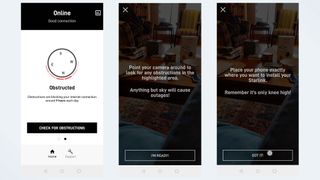
The Starlink smartphone app has an option for checking for obstructions as you move it around using the phone's camera. But placing the phone exactly in the proposed position of the dish and following the on-screen instructions for aiming the camera up or down is tricky, if not impossible because the camera needs to be at knee height. We tried lying on the ground to get a better look.
Once you have found the ideal position for the Starlink dish, the idea is to then permanently install it, which requires additional components. Starlink offers several permanent mounting solutions ranging in price from $69 for a pole mount to $24 for a roof mount. Another expense to plan for.
Starlink Review: Performance
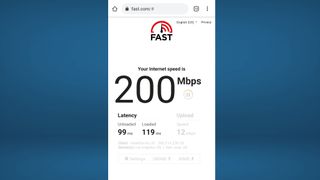
Once again, we tested Starlink for several weeks in all kinds of weather and subjected it to typical Internet tasks, from streaming 4K movies and participating in Zoom conference calls to uploading and downloading voluminous videos.
In general, we witnessed some respectable speeds but found Starlink is still very much short of the touted goal of 300 Mbps service — very short indeed. Using Starlink's own speed test app , we obtained average download speeds of up to 87 Mbps and as low as 76 Mbps. (Compare this to cable services that are generally more than double such speeds.) Upload speeds for those working at home were typically 15 Mbps to 10 Mbps with latency ranging from 27 ms to 41 ms.
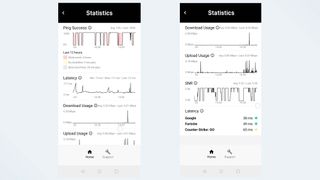
These are not terrible results — if you've been struggling with rural download speeds of 10 Mbps. But these are very disappointing results if you're planning on working from a remote rural location with sundry services such as streaming 4K content while others at home participate in Zoom meetings.
Furthermore, while initial connections for video conferencing looked crisp and clear, dropouts continued to thwart services like Skype and Zoom. Apologizing to business colleagues for the frequent disconnects gets old, fast. Whether these problems are the result of a much larger subscriber base overwhelming Starlink in our test area, we cannot say. But other subscribers in other areas have consistently reported declining service speeds over the past year.
The apparent declining Starlink performance was also apparent when streaming video from services like Hulu, TCM, and ESPN. Unlike our experience during the beta test period, the buffering icon was not an unfamiliar sight appearing every 15 minutes or so during evening hours. Such hiccups won't endear Starlink to gamers, either.
And as before we had some issues with VoIP calls, which would drop out without warning. The overall experience did not instill confidence in Starlink.
Yes, it's still true that Starlink is far better than the DSL service available in the same location. The best the fixed DSL line could do on Fast.com was 1.2 Mbps downloads, 320 Kbps uploads, with a slow-as-molasses latency of 182 ms.
It's also true that Starlink does better than other satellite Internet services from the likes of Hughes, which tend to be more vulnerable to snow and rain. Starlink thwarts snow by actually heating the dish and melting the flakes as they land. During several heavy snow storms this worked well, especially compared to a TV satellite dish that we had to occasionally sweep clean. However, we did experience a reduction in bandwidth during heavy downpours. Bandwidth would typically be cut in half during these periods to around 20 Mbps download speeds.
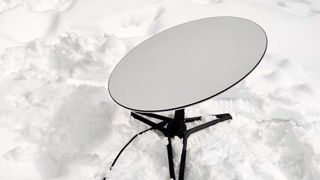
Starlink review: Verdict
Anyone who has lived for any length of time in an area that does not have fast Internet access will find Starlink worth it—even at its inflated price. It is the only game in town until Amazon and others launch competing services (whenever that will be). However, we are less sanguine about the chances Starlink service will improve. It's been more than a year with hundreds of more birds in the sky, and it still suffers from the shortcomings we saw on our first outing.
We also compared Starlink against a recent installation of Comcast's Xfinity cable Internet service at the same location. Xfinity consistently delivered download speeds of over 400 Mbps and even average speeds of 140 Mbps during peak usage times. So if you have the option, cable is the superior choice vs. Starlink—but we appreciate the fact that many people still don't have such options.

John R. Quain has been reviewing and testing video and audio equipment for more than 20 years. For Tom's Guide, he has reviewed televisions, HDTV antennas, electric bikes, electric cars, as well as other outdoor equipment. He is currently a contributor to The New York Times and the CBS News television program.
AT&T sending out emails to millions whose data was stolen in massive breach — what you need to know
Super Bowl 2024 — how Verizon got Las Vegas ready for the biggest game of the year
Here's what going to bed with wet hair can do to your mattress
admin said: Star satellite internet is impressively fast and finally brings broadband to rural areas. It just needs to be more consistent and work out the beta kinks. Star review (hands on): High-speed satellite internet is finally here : Read more
- Dustin247 Fast.com is owned by Netflix and typically shows speeds your ISP have capped data speeds at to conserve bandwidth. Im sure you could extend the data cable if thats what comes withe the antenna by cutting adding a cat5 or cat6 coupler. Im assuming the router has a bridge mode. Reply
- jrharbort One detail that isn't mentioned in this review is if Dishy was kept in one place for at least a week. There has been quite a few reports that keeping it stationary for a long enough period of time allows the dish to better calibrate and achieve higher speeds, as well as connection stability. Reply
- Salisburysenior Good review of Starlink, but I'm concerned about the installation after reading the cables are permanently attached. What size hole is required to get the cable from the outside to the inside of the house? Reply
- Canuck23 I’ve found using my own router means rebooting it about twice a week whereas I didn’t have to reboot my router rarely ever before. With that said it’s a very minor inconvenience for the speeds I’m getting. Also the first week was a little unstable but I’ve had service for a month and almost never have drops now. Reply
Salisburysenior said: Good review of Starlink, but I'm concerned about the installation after reading the cables are permanently attached. What size hole is required to get the cable from the outside to the inside of the house?
bernie17 said: Can the router be used in ethernet only mode to connect to an existing network?
- Salisburysenior I've always experienced a loss of signal with Direct TV whenever storm clouds passed overhead. Is this also true with Starlink? Reply
- JLIntegra This is one of the best reviews of the Starlink I have read. I should point out though that you have an inaccuracy in your report. Weather intentionally omitted or not. - ViaSat and Hughes Net have been "getting broadband to the rural parts of the country" for years now. It is with draw backs like high latency rates. However, at least with ViaSat, you can Stream Netflix and even conduct Zoom meetings on it even have VIOP connections work fairly well on it. Albeit usually at a much higher price, leased equipment, as well as long contracts. What Starlnk does bring is gaping much of the broadband shortfalls of these other services. at a slightly lower price and with out the long contracts. You are purchasing the equipment though. So some of them like ViaSat (And even Amazon, which is in works to have their own version like Starlink in the near future) are try to use interesting legal means to halt the deployment of Starlink. Fast switch gaming (FPS and such) would now be possible with Starlink as well as a better connection of video conference services such as Zoon, Teams and such. As well as 4K downloads and the like (pending bandwidth limits that will likely be coming.) Reply
Salisburysenior said: I've always experienced a loss of signal with Direct TV whenever storm clouds passed overhead. Is this also true with Starlink?
- View All 26 Comments
Most Popular
By Jason England March 28, 2024
By Anthony Spadafora March 28, 2024
By Jessica Downey March 28, 2024
By Michael Gowan March 28, 2024
By Lee Dunkley March 27, 2024
By Hunter Fenollol March 26, 2024
By Jason Cipriani March 25, 2024
By Andrew Hayward March 25, 2024
By Ryan Epps March 25, 2024
By Jason England March 25, 2024
Starlink's new traveling 'Portability' feature isn't all that portable
Bring your satellite internet with you anywhere — as long as you don't mind lugging equipment around.
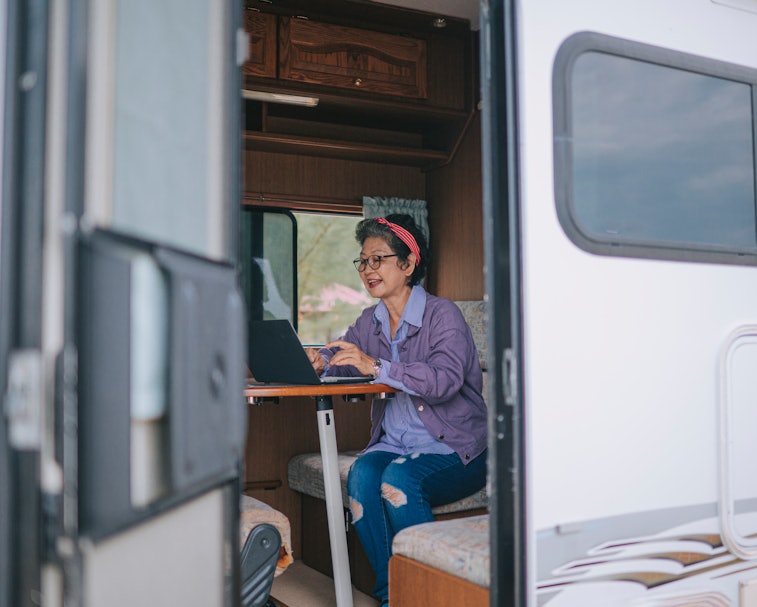
Though SpaceX’s Starlink internet service is generally intended for home use, subscribers will now have the option to access their service from anywhere on their home continent. The company is introducing a new add-on “portability” feature that, for an extra $25 per month, will let users connect to Starlink’s satellites while traveling. If they’re willing to cart around their Starlink dish and associated hardware, that is.
That’s the most pressing caveat of the new feature, really. The $25 per month fee does also add to Starlink’s already-expensive price tag, which may stop some subscribers from taking advantage of the new feature.
Okay, so the Starlink equipment will pose something of a problem for many hoping to take their high-speed internet on the road. Unlike other mobile internet solutions like cellular routers , Starlink requires a bulky satellite dish (affectionately known as a “dishy” in Starlink parlance). This isn’t exactly the road-tripping solution some may be looking for.

Still in early stages — Portability is still very much a new product for Starlink, and the company is being open about its limitations. According to the Starlink support site , service is being provided on a “best effort” basis, meaning users might experience slower speeds and higher latency while traveling. Providing service to users’ registered addresses is still the company’s priority.
Starlink also won’t offer in-motion service with Portability, so subscribers can’t use it while driving, for example. Doing so will actually void the hardware’s limited warranty. There’s also that caveat about international travel; Starlink says you’ll need to register an address change after two months of using the equipment abroad.
A taste of future offerings — Despite its shortcomings, Starlink has generally been successful in finding rural customers in need of more reliable internet service. The new Portability feature has a similar vibe: useful in very specific circumstances for now, with the promise of expanded usability in the future. Having to trek all that equipment around and power source issues are problems Starlink is already working on.
The limited Portability feature is available now; customers can add the service on their Starlink account page. Adding Portability brings Starlink’s monthly fee up to $135 (much more for premium service ) with a $599 initial equipment fee. Pair it with your Cybertruck Camper for the ultimate Musk effect.
Watch: Extreme Reviews

Two Ways You Can Travel With Starlink
Starlink satellite internet is a game changer for RV owners, the van life crowd, digital nomads, and others. With virtually global coverage, it’s now possible to access high speed, low latency internet from anywhere. It’s no surprise that the demand and interest of Starlink has skyrocketed among all types of travelers looking to stay connected.

For those of you looking to travel with Starlink, I created this guide to explain how. There are multiple ways to buy Starlink, and it can get confusing. I will detail the two Starlink service plans that allow for portable Starlink operation, and recommend which one you should pick.
Table of Contents
Can I Travel With Starlink?
Yes, you can travel with your Starlink kit if you purchase Starlink RV, or purchase the Portability add-on with the Residential plan . Starlink RV is the dedicated travel plan. You can pick between a Standard hardware kit, or the in-motion enabled Flat High Performance version if you need a connection while driving. People with existing Residential service can also take their dish on-the-go by enabling Portability. Portability offers the same travel capabilities of RV, but for existing Residential plans, so you don’t have to buy another dish just to travel with.
Method 1: Starlink RV
Starlink RV is the dedicated travel product from Starlink. With RV, you don’t have a permanent service address like with the Residential service. RV is designed for travelers who mainly use Starlink in different locations. If you are a full-time RV’er, van lifer, overlander, etc., Starlink RV is the best choice.
Starlink RV costs $150/month, with a $599 equipment fee. Speeds range from 5-50 mbps.
The hardware in the RV kit is identical to the Residential version. The difference is how the account and billing is structured. With Starlink RV, you can pause service when you don’t need it. There is no waitlist or limited availability. RV customers are also expected to experience slower speeds in highly congested areas. Their bandwidth is deprioritized on the Starlink network, which prioritizes Residential customers.
For more detail on the RV service, check out our full Starlink RV article .
Method 2: Residential With Portability Enabled
Starlink RV is great as a dedicated unit for traveling. But what if you have a need for home internet and you want to travel with it? That’s where the Portability feature comes in. With normal Residential, you can only use the dish at the designated service address on your account. If you attempt to use it outside of the service address, it will give you an error and won’t connect to satellites.
Portability is an add-on feature for the Starlink Residential plan that allows you to use your dish outside of the service address. It costs an extra $25/month, and can be turned on/off in monthly increments. To use Portability, you will purchase Starlink Residential (which costs $120/month + $599 for equipment) and then enable Portability from your account dashboard. The big difference: you cannot pause Residential service like you can with RV.
Portability is great for travelers who primarily need home internet service, but have the occasional need to travel with it. It’s not as flexible as RV because service cannot be paused, but it enables existing Residential customers to travel without having to buy a separate RV dish. For more detail, check out our article on Starlink Portability .
Update: Starlink recently eliminated the Portability option for US customers .
Which Method Is Best?
Get Starlink RV if:
- you live in the US (Portability is not available to US customers)
- you primarily need recreational/portable/travel internet service
- you can’t wait on the Residential waitlist
- you want the ability to pause monthly service payments
- you don’t mind performance inconsistency
Get Starlink Residential w/Portability if:
- you primarily need home internet service
- you only occasionally need to travel with Starlink
- you want the highest level of performance at home
- you will use Starlink year-round (either at home or traveling)
How To Check For Starlink Coverage
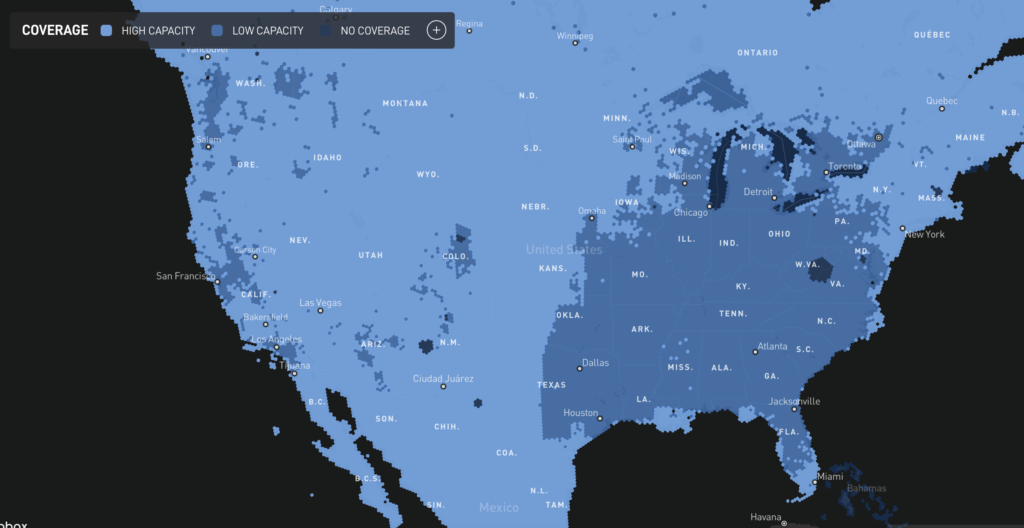
How do you know where Starlink can be used? Thankfully, Starlink provides an up-to-date map that shows where Starlink has coverage. In the screenshot above, you can see that virtually the entire US is covered. The difference in the shades of blue shows what areas are low capacity vs high capacity. RV or Portability users traveling in low capacity areas will experience slower speeds. Areas not covered are dark gray in color.
Starlink Travel Restrictions
If you are traveling with Starlink, there are some restrictions that you should know about. For a full understanding of the restrictions, make sure to check out the Terms of Service on the Starlink website, but here are the important bits for travelers:
Starlink RV: RV service can only be used within the same continent as the shipping address on the Starlink account. So if you order Starlink RV and have it shipped to the US, you could use it in all of North America, but not in Europe.
Portability: Portability, like RV, can only be used within the same continent as the registered service address on the Starlink account. But unlike RV, if you use Portability at one location for more than 2 billing cycles, the service address on your account may be automatically updated.
The latest Starlink news, reviews, tutorials, and much more!
Here Are The Biggest Disadvantages Of Starlink
Best Aftermarket Wifi Routers For Starlink
57 thoughts on “Two Ways You Can Travel With Starlink”
Hello; I am just a little bit confused. It says that the portability option is no longer available in the U.S. Which is fine as I am Canadian. Is the Portability add on option is still available in Canada? I am planning on traveling through the U.S. and Canada for the next year. I do have a Canadian residence. The main reason I am asking is because right now I can get residential rural equipment for $199 until the end of September. Way better deal than buying the roam dish. Faye
They have discontinued it everywhere now. You can still do the discount by ordering Residential. Then, just switch the plan to Roam. The hardware is identical between Roam and Residential.
How do i switch my plan from residential to roam in the United States?
If you log in to Starlink.com, then click Manage on your Starlink, you should see a change service plan button. If you don’t, you might just have the cancel option. You will have to cancel your service, then hit activate, and select Roam.
Hello I have brought my Starlink from Scotland to Florida. How do I get it to work Please
I recommend contacting customer support to see if they can change the country on your account. You can create a support ticket from the app or website:
https://www.starlinkhardware.com/how-to-contact-starlink-customer-support/
Hello, I would like to know if I get a service in US and then travel to Argentina -where none service are available yet- can I get connection while I am in Buenos Aires?. What kind of service should I contract?
Hello, I live in the US but have a travel barge (travels the canals) in France. Can I order from US but have it shipped somewhere in France so it will work there?
I don’t think they allow it to be shipped out of the country. Might have to order and receive in the US, and then ship it yourself to the final destination.
One question: Can I also be an agent for Starlink internet in Nigeria. Can I purchase the residential hardware in the US (with my Nigerian address, although will first receive it at a U.S. address)and travel with it to Nigeria in the plane, and set it up, using my Nigerian address.
One question: Can I also be an agent for Starling internet in Nigeria.
My blog isn’t associated with Starlink. They do have authorized resellers of the hardware, but not the service as far as I know. You would have to contact Starlink directly.
Hi. I live in the US, but I will be moving to the country of Nigeria soon. Can I purchase the Residential Starlink with the dish etc, in the US, and travel with it in the plane to Nigeria, and install it at my home in nigeria? Do I have to provide my Nigerian address to purchase it here in the US. Finally, can I be paying locally from Nigeria, or do I have to be paying to a U.S. account in dollars( which may be difficult)?
For Residential you would need to purchase it at the address in Nigeria. Alternatively, you could purchase Global Roam and use it in both places without worrying about an address.
Hi I have a house overseas that I visit a couple times a year in 10 day increments. The house is in Sicily. Can I use starlink?
Yes, you could buy a unit locally with Residential, or purchase Global Roam if you would like to take Starlink back and forth.
How can I use Starlink Resedential in the UK 6months and then move to USA for 6 months Please
You could purchase Residential in the UK, and then when you move, cancel/transfer the hardware out, and activate it on Residential or Roam for a US address.
Hello I mistakenly added the portability add on to my starlink. Please how can I turn it off ??
Log in to your account, click manage, then remove portability. More details and screenshots here:
https://www.starlinkhardware.com/starlink-roaming-mode-explained/#How_To_Turn_Off_Starlink_Portability
Hi Noah , I purchase RV for my address in US but now I am in the Middle East . Starlink has services here but how can I use the same device I ordered to my US address here ? It is urgent since I don’t have Wi-Fi here and must use my device . Is there any way to unlock it for my area ?
I believe you have to reach out to customer support. The equipment is geo-locked, so Starlink will have to transfer countries.
I live in the US and have a home in Scotland which we spend maybe three months a year at. I only want to pay for service while I am there and pause it for 3-4 months at a time. Which is my best option for service? Thanks
If you only need Starlink in Scotland, I recommend purchasing RV in Scotland, and having it shipped there. If you have it shipped to the US, you won’t be able to use it in Scotland.
Hi Noah, we currently have starlink residential but we are going on the road for the next 3 months and want to have internet in the most remote areas. I understand that we will need to purchase a 2nd device and second service plan. My question is will there be any issue with our service plans after 2 billing cycles of using portability service? Thank you
If you aren’t in the US, you can use your Residential dish if you don’t mind taking it down to take with you. Just need to add the Portability add-on to your monthly plan. The issue with the two billing cycles is if you were to stay in a single location for 2+ months. If you will be traveling around from one area to the next, it isn’t a concern. Basically what Starlink wants to prevent is someone ordering Residential for an address they don’t live at, purchasing Portability, and then using it in Portability mode at their real address. If you are using it for how it is intended, you will be ok.
If we want to use the portability option can be buy a second dish and just take our existing router with us so we don’t need to remove our dish from the roof when we want to travel ?
Unfortuantely, no, the service plans are tied to the dish itself. So for each dish you have, you would need a service plan for it.
How much slower are the speeds generally for portability vs residential? Like 50% slower at worst, and generally only 20% slower?
It depends entirely on network activity in the area. There is not a built in speed penalty for Portability or RV. In other words, if you were the only Starlink user in your state, your speeds on RV and on Residential might be identical. It’s only when the Starlink network in your area is experiencing very high demand, that the performance difference would be noticeable. On the official specifications, Starlink lists RV/Portability at half the speed potential of Residential. So I would say 50% slower would be a good guess, but again, it depends on usage in your area. RV/Portability users are deprioritized, so their performance will suffer first during peak hours.
Can we use Starlink RV all over the world like in the oceans as well. I am a mariner and want to purchase Starlink but my location keeps on changing everyday and sometimes middle of Atlantic or Pacific or Indian ocean.
No, only Maritime is available in the middle of the oceans. RV is limited to some coastal areas, and must stay within the same continent that the unit was shipped to.
Hi, I have a colleague coming in to Nigeria from Dubai. If she gets starlink for us from Dubai, will it work in Nigeria
It depends on the local market restrictions of which I am not familiar, but generally the dish’s cannot be permanently moved to another country unless you try to transfer it. I would recommend that you contact Starlink support to ask about the specific restrictions for UAE and Nigeria.
Can I buy and subscribe Starlink in Japan and use it in Laos or other countries with limited internet?
You can use RV or Portability within the same continent, but you can’t stay in a different country (from Japan) for more than 2 months at a time.
Thanks Noah for the information.
Since Japan and Laos are both in Asia, do you think it will work if I subscribe 2 units from Japan, bring 1 unit at a time to Laos for 2 months, bring it back to Japan to swap with the 2nd unit, and so on. Or, say subscribe in Australia and bring it to Timor Leste?
Thank you once again.
If you are staying in these countries longer term, it would be best to purchase Starlink separately in those countries. If RV is available in those markets, you could buy RV, so you can pause monthly payments for each dish that you aren’t using.
Unfortunately Starlink is not available yet in South East Asia, those countries are not even in the waiting list according to Starlink Map. So I am thinking of bringing RV from Japan to Laos.
[ If RV is available in those markets, you could buy RV, so you can pause monthly payments for each dish that you aren’t using.] Thanks for the tips.
Hi…..I have a home in Canada and one in Washington. I am Canadian and spend a majority of time in canada but a month or 2 in Washington. I see the RV High Performance is not available in canada at this time. Should I order it with the USA address? Will I be ok?
The restriction with RV is that you can’t stay in another country for a period of more than 2 months without having to change your billing address. Not sure how this would effect you since the HP RV dish isn’t available in Canada. If you do purchase this way, I would send Starlink support a message with your circumstances to see what they advise.
Hi Noah….thanks a lot for the info. I am not able to contact customer support with those question as all i can come up with are their stock preprogrammed answers. Do you know how I can contact them with these questions….thanks again. Mike
Make sure you are logged in to the app or the website. On those answers, hit the thumbs down icon to submit a support ticket. More info here:
Hi Noah, Your answers helped a lot to understand some specific for the Starlink service. I’m located in Ukraine and have bought the starlink from Europe. Currently I’ve RESIDENTIAL starlink with a location defined as Tanvald, Czechia. Could you please advise me with questions?
1. Should I buy portability for my starlink to use it in Ukraine? 2. Is it possible to pause it usage for month or more? I mean in most of cases I have a stable local internet and want to use the starlink only if needed. Maybe it’s better to buy RV instead of Residential in this case?
Appreciate for your help in advance!
It’s not possible to pause the Residential service. You could, however, convert it to Starlink RV and have the ability to pause. You can convert to RV from the account dashboard:
https://www.starlinkhardware.com/how-to-switch-from-residential-to-rv/
Hi Noah, Once again appreciate for the advise!
Thanks for the great info on this site. My wife and I are adopting from Nigeria, and would like to get a Starlink RV that we can use while in Nigeria for 2 months (to keep my normal business running in the US). If I purchased a Starlink RV in the US, didn’t start service until I went to Nigeria, would that work for the 2 months we need to stay there? Or, do I need to figure out how to get a Starlink purchased while living in Nigeria for the short 2 month stay (Lagos area)? Trying to figure out how to have a good internet connection setup prior to going in April/May this year. Thanks for your input!
You would need to buy RV and have it shipped to Nigeria. RV only works within the same continent as the shipping address.
We live in uk and travel to mainland Europe twice per year for up to 90 days at a time with an rv travelling from country to country at different locations. If we used the home version with travel add on would we be cut off after 60 days?
I believe it’s only an issue if you stay at a single location for 2+ billing cycles. If you are moving from country to country, it shouldn’t be an issue.
Hi Noah, Thank you for all your great posts. We are on the list for a Starlink residential system here in Panama. The one problem we have is in Bocas Del Toro, there is no postal service (I do not have an address for my home, only coordinates on Google). We only get things sent to us through a mail-forwarding service out of Miami. On my address, I can’t update my delivery address because my service request is registered in Panama but my mailing address is in Miami. Literally, all of the islands here have this issue, it’s not singular. How will we be able to get the Starlink if we can only send it to an address in the service area? Additionally, I’m curious if I register it to our US address and add the “portability” option, if that would work or if that would be a good workaround? Any thoughts?
If there is availability at your US address, I think buying it there, and then changing your service address to Panama would be a good workaround. You should be able to update the service address yourself on the website dashboard, but reach out to support if you have any troubles. Once you have the hardware in the US you could ship it via your preferred method, or even pack it in your checked baggage. Just be sure to turn it on and allow it to “activate” at the US address before you attempt to use it in Panama.
Ok, one last thought – the RV option – are there limits to how long you can use the RV in one location? I know several people here who are using that and the service is great but I thought I read that you can only use it for up to 6 months in one location.
It’s only an issue if you wander outside of your shipping address country.
Thank you for this article, it was very helpful. I see that there is no easy way to contact Starlink customer service, maybe you can help answer this question. I am currently in Baja, Mexico and I want to order the hardware and start service. I would use a Mexican address to receive it but I am Canadian. We live full-time in our van so while my legal address is in Canada, I do not live at that address. It seems that Starlink would work when we are back in Canada even though the address would be in Mexico? When we are back in Canada does the billing change to Canadian rates or remain at the Mexican rates? If we wanted to travel to Europe with it is there a way to change the address to an European one to have use there? Or are they requiring a second purchase of hardware for use in Europe?
RV can be used within the same continent, so you should be able to buy in Mexico and then use it in Canada, assuming you can have it shipped to an address in Mexico. If you stay in Canada for more than two billing cycles, Starlink may require you to update your shipping address to Canada, at which point I believe the billing would change over as well.
For traveling to Europe, I believe you would need to send a request to Starlink to transfer the dish. Technically, you can’t use the dish outside of the continent that you shipped it to, so it wouldn’t work in Europe without Starlink changing it on their end. I haven’t heard if this is a simple matter of requesting it, or if they make you buy a new dish.
Leave a Comment Cancel reply
Save my name, email, and website in this browser for the next time I comment.
Subscribe to our newsletter?
Starlink satellites: Facts, tracking and impact on astronomy
Are Starlink satellites a grand innovation or an astronomical menace?

How to see starlink satellites
- Impact on astronomy
Expert Q&A
- Collision risk
- End of lifespan: Deorbiting
V2 Starlinks
- Use in emergencies
- Future plans
- How do they work?
- How can I get Starlink internet?
Additional resources
Bibliography.
Starlink is the name of a satellite network developed by the private spaceflight company SpaceX to provide low-cost internet to remote locations.
A Starlink satellite has a lifespan of approximately five years and SpaceX eventually hopes to have as many as 42,000 satellites in this so-called megaconstellation.
The current V2 Starlink satellite version weighs approximately 1,760 lbs (800 kilograms) at launch, almost three times heavier than the older generation satellites (weighing in at 573 lbs or 260 kg), according to Spaceflight Now .
Related: Wild solar weather is causing satellites to plummet from orbit
How many Starlink satellites are in orbit?
As of March 2024, there are 5,504 Starlink satellites in orbit , of which 5,442 are operational , according to Astronomer Jonathan McDowell who tracks the constellation on his website .
The size and scale of the Starlink project concerns astronomers, who fear that the bright, orbiting objects will interfere with observations of the universe , as well as spaceflight safety experts who now see Starlink as the number one source of collision hazard in Earth's orbit. In addition to that, some scientists worry that the amount of metal that will be burning up in Earth's atmosphere as old satellites are deorbited could trigger unpredictable changes to the planet's climate.

Starlink satellites orbit approximately 342 miles (550 kilometers) above Earth and put on a spectacular show for observers as they move across the sky. This show is not welcomed by all and can significantly hinder both optical and radio astronomical observations.
You don't need any special equipment to see Starlink satellites as they are visible to the unaided eye. The satellites can appear as a string of pearls or a "train" of bright lights moving across the night sky . Starlink satellites are easier to see a day or two after their launch and deployment then become progressively harder to spot as they climb to their final orbital height of around 342 miles (550 km).
Related: Starlink satellite train: How to see and track it in the night sky
Our list of the best stargazing apps may help you with your Starlink viewing planning. If you want to see where all of the Starlink satellites are located in real-time check out this Starlink map showing the global coverage of each Starlink satellite as well as information on how many are currently in service, inactive or have burned up in Earth's atmosphere.
Related: How to photograph Starlink satellites guide .
Starlink coverage
To see current Starlink internet availability around the world, and if it's available where you are, Starlink has an interactive map detailing locations where Starlink internet is available, which areas are on the waitlist as well as areas that are "coming soon".
"Starlink is ideally suited for areas where connectivity has been unreliable or completely unavailable," the Starlink main page states. "People across the globe are using Starlink to gain access to education, health services and even communications support during natural disasters."
More information about Starlink setup, along with answers to frequently answered questions, are available on the customer service page .
The history of Starlink
SpaceX's satellite internet proposal was announced in January 2015. Though it wasn't given a name at the time, CEO Elon Musk said that the company had filed documents with international regulators to place about 4,000 satellites in low Earth orbit.
"We're really talking about something which is, in the long term, like rebuilding the internet in space," Musk said during a speech in Seattle when revealing the project.
SpaceX's satellite internet proposal was announced in January 2015. Though it wasn't given a name at the time, CEO Elon Musk said that the company had filed documents with international regulators to place about 4,000 satellites in Low Earth Orbit .
Musk's initial estimate of the number of satellites soon grew, as he hoped to capture a part of the estimated $1 trillion worldwide internet connectivity market to help achieve his Mars colonization vision . The U.S. Federal Communications Commission (FCC) has granted SpaceX permission to fly 12,000 Starlink satellites, and the company has filed paperwork with an international regulator to loft up to 30,000 additional spacecraft .
To put that into perspective, as of Nov. 7, 2022, only 14,450 satellites have been launched in all of history with 6,800 currently active according to the European Space Agency (ESA).
SpaceX launched its first two Starlink test craft, named TinTinA and TinTinB, in February 2018. The mission went smoothly. Based on initial data, the company asked regulators for its fleet to be allowed to operate at lower altitudes than originally planned, and the FCC agreed .
The first 60 Starlink satellites launched on May 23, 2019, aboard a SpaceX Falcon 9 rocket . The satellites successfully reached their operational altitude of 340 miles (550 kilometers).

Starlink's impact on astronomy
Within days of the first 60-satellite Starlink launch, skywatchers spotted a linear pearl string of lights as the spacecraft whizzed overhead in the early morning. Web-based guides showed others how to track down the spectacular display.
"This was quite an amazing sight, and I was shouting 'Owowowow!' when the bright 'train' of objects entered into view," Netherlands-based satellite tracker Marco Langbroek told Space.com in 2019 via email. "They were brighter than I had anticipated."
That brightness was a surprise to almost everyone, including both SpaceX and the astronomical community. Researchers began to panic and shared photos of satellite streaks in their data, such as this trail image from the Lowell Observatory in Arizona.
They expressed particular concerns about future images from highly sensitive telescopes such as the Vera Rubin Observatory (formerly known as the Large Synoptic Survey Telescope), which will study the entire universe in exquisite detail and is expected to come online in 2022. Radio astronomers are also planning for interference from Starlink's radio-based antennas.
In photos: SpaceX launches 60 Starlink satellites to orbit

The International Astronomical Union (IAU) expressed concerns in a statement released in June 2019. "Satellite constellations can pose a significant or debilitating threat to important existing and future astronomical infrastructures, and we urge their designers and deployers as well as policy-makers to work with the astronomical community in a concerted effort to analyze and understand the impact of satellite constellations," the statement said.
In April 2021, Thomas Schildknecht, the deputy director of the Astronomical Institute of the University of Bern, who represents Switzerland in the IAU, said at the European Space Agency's space debris conference that the union was calling on the United Nations to protect pristine night sky as cultural heritage against the uncontrolled expansion of megaconstellations.
In a report released in October 2022, the American Astronomical Society (ASS) likened the impact of megaconstellations on astronomy to light pollution. The report said the sky may brighten by a factor of two to three due to the diffuse reflection of sunlight off the spacecraft.
Related: Can you see stars in light polluted skies?
We spoke to Meredith Rawls is a stellar astronomer and software developer about the effects of low-Earth orbit satellites on ground-based astronomy. This interview was originally published in our sister magazine All About Space (Issue 119, July 2021).

Dr Meredith Rawls is a stellar astronomer and software developer working as a research scientist with the Vera C. Rubin Observatory Legacy Survey of Space and Time (LSST) group at the University of Washington. As a software developer, Rawls is involved in developing algorithms that can identify objects in telescope data that have changed, and characterize them accordingly. Her work also entails researching how low-Earth orbit satellites affect astronomy and what satellite operator companies can do to reduce their impact on the night sky.
How do low-Earth orbit satellites pose a problem for ground-based astronomy?
The main thing is there are so many of them that are currently being launched and planned to be launched and they reflect sunlight so they can be really bright. The brightness actually surprised some of the satellite operators, they had not anticipated how bright their satellites were actually going to be. Astronomers were used to sometimes seeing satellites, but now it's an order of magnitude more and they're going to be showing up very commonly in observations from ground-based telescopes.
Are all aspects of astronomy affected?
I tend to be very biased towards the ground-based optical astronomy because that's our human experience with the night sky and they're the main kind of observations that I was trained in as a student. But radio astronomy is maybe even going to be more severely impacted than optical astronomy. It's complicated.
Radio astronomers have been competing for years for a frequency spectrum, they have this national and international relations about who gets what frequencies on the radio spectrum, for example your mobile phone service, your WiFi, any gadget that transmits has to have approval. Radio astronomers have fought long and hard to make their presence known and say "we need this chunk of the spectrum because that’s where Hydrogen emits, we can't change that", in the U.S. they go to lobbying meetings to make their voices heard, so there is already a presence of radio astronomers in some of these regulatory spaces.
The issue with growing numbers of low-Earth orbit satellite constellations is that one of the main goals they have is to send down high amounts of data for internet access so they'll be constantly beaming down loud radio signals down to Earth so people can get their internet connection. This is potentially going to cover a large amount of ground.
There are some things that they could do to try and lower the effects on radio astronomy, for example turning off their transmitters when they are over radio telescopes.
But the reality is that if you have located a set of frequencies that you are going to use, physically these waves spill over the edges, you cannot have a sharp cut off, it's just not how waves work. So even with the best intended regulations controlling what frequencies are being used by satellite companies, it is going to have some pretty serious effects on radio astronomy.
If low-Earth orbit satellites are problematic, should the companies just place the satellites higher?
Actually that would be worse. It's a little complicated because you could think that maybe a lower orbit satellite would be brighter because it is closer, which is true but the trick is that it moves faster in a lower orbit because it has to not fall out of the sky. That means that when you are taking a picture it will move out of the way faster and the pixels won't linger long enough to make as bright of a streak in the image, which is better.
So I was personally disappointed that OneWeb decided to keep their satellites at a higher altitude, whereas SpaceX have been more willing to keep their satellites at lower altitudes. Though space debris will become an even bigger problem at these lower altitudes as the lower the orbit, the more crowded it gets.
Starlink collision risk
SpaceX received additional backlash in September 2019, when the European Space Agency (ESA) announced that it had directed its Aeolus satellite to undertake evasive maneuvers and avoid crashing into "Starlink 44," one of the first 60 satellites in the megaconstellation. The agency took action after learning from the U.S. military that the probability of a collision was 1 in 1,000 — 10 times higher than ESA's threshold for conducting a collision-avoidance maneuver.
In August 2021, Hugh Lewis, the head of the Astronautics Research Group at the University of Southampton, U.K. and Europe's leading space debris expert, told Space.com that Starlink satellites represent the single main sources of collision risk in low Earth orbit.
According to computer models, at that time, Starlink satellites were involved every week in about 1,600 encounters between two spacecraft closer than 0.6 miles (1 kilometer). That's about 50% of all such incidents. This number rises with every new batch of satellites launched into space. By the time Starlink deploys all 12,000 satellites of its first-generation constellation it could reach 90%, Lewis said.
Lewis also expressed concerns that Starlink's operator SpaceX, a newcomer into the satellite business, is now the single most dominant player in the field whose decisions can affect the safety of all operations in low Earth orbit.
End of lifespan deorbiting procedure
SpaceX plans to refresh the Starlink megaconstellation every five years with newer technology. At the end of their service, the old satellites will be steered into Earth's atmosphere where they will burn up. That is certainly commendable when it comes to space debris prevention, however, there is another problem.
The vast amount of satellites that will be burning in the otherwise pristine upper layers of the atmosphere could alter the atmospheric chemistry and have unforeseen consequences for life on the planet.
In a paper published in May 2021 in the journal Scientific Reports , Canadian researcher Aaron Boley said the aluminum the satellites are made of will produce aluminum oxide, also known as alumina, during burn-up. He warned that alumina is known to cause ozone depletion and could also alter the atmosphere's ability to reflect heat.
"Alumina reflects light at certain wavelengths and if you dump enough alumina into the atmosphere, you are going to create scattering and eventually change the albedo of the planet," Boley told Space.com .
That could lead to an out-of-control geoengineering experiment, a change in the Earth's climate balance. The effects of such alternations are currently unknown.
Karen Rosenlof, an atmospheric chemistry expert at the National Oceanic and Atmospheric Administration (NOAA), told Space.com she too was concerned about the effects of the particles from the burning satellites in the atmosphere. Rosenlof has expertise in modeling the effects of geoengineering interventions.
David Fahey, the Director of NOAA's Chemical Sciences Laboratory, and Martin Ross, a physics and meteorology scientist at the Aerospace Corporation, both told Space.com that more research is urgently needed to understand the effects of burning increasing amounts of satellites in the atmosphere.
The problem, the scientists said, is that in those high layers of the atmosphere, the particles are likely going to stay forever. Boley said that while the number of satellites burning in the atmosphere will be considerably smaller than the number of meteorites , the chemical composition of the artificial objects is different, thus the presence of the products of their burning is something scientists know nothing about.
"We have 54 tonnes (60 tons) of meteoroid material coming in every day," Boley said. "With the first generation of Starlink, we can expect about 2 tonnes (2.2 tons) of dead satellites reentering Earth's atmosphere daily. But meteoroids are mostly rock, which is made of oxygen, magnesium and silicon. These satellites are mostly aluminum, which the meteoroids contain only in a very small amount, about 1%."
As the accumulation of those particles would increase over time, so would the intensity of the effects. It thus cannot be ruled out that over decades the pollution from burning megaconstellation satellites could lead to changes on a scale akin to what we are currently experiencing with fossil-fuel-induced climate change .
"Humans are exceptionally good at underestimating our ability to change the environment," said Boley. "There is this perception that there is no way that we can dump enough plastic into the ocean to make a difference. There is no way we can dump enough carbon into the atmosphere to make a difference. But here we are. We have a plastic pollution problem with the ocean, we have climate change ongoing as a result of our actions and our changing of the composition of the atmosphere and we are poised to make the same type of mistake by our use of space."
Starlink did not respond to Space.com requests for comment.
A Starlink satellite's lifespan can also be cut short by powerful geomagnetic storms.
On Feb. 3, 2022, a SpaceX Falcon 9 rocket made a routine and successful launch of 49 Starlink satellites from NASA's Kennedy Space Center in Florida. But only a day later, a geomagnetic storm above Earth pushed up the density of the atmosphere, increasing the drag on the satellites and dooming the bulk of them to an early death.
"Preliminary analysis show the increased drag at the low altitudes prevented the satellites from leaving safe mode to begin orbit-raising maneuvers, and up to 40 of the satellites will reenter or already have reentered the Earth's atmosphere," SpaceX wrote in an update on Feb. 8, 2022.
Read more: Better space weather forecast could have saved SpaceX Starlink satellites from solar storm
SpaceX began launching an upgraded version of Starlink, called the V2 mini, on February 27, 2023 . The V2 minis serve as a precursor version to the company's full V2 design, whose larger design is intended to launch on SpaceX's yet-operational Starship rocket. In the interim, the V2 minis stand in as a measurable upgrade from Starlink's previous version.
Starlink V2 minis are more robust than the first generation, in both size and capability. According to SpaceX's social media posts , the upgrades include argon Hall thrusters for a 2.4x and 1.5x boost in thrust and impulse, respectively, refitted phased array antennas, and E-band backhaul use capabilities that nearly quadruple Starlink's data capacity.
The full version V2 satellites won't launch until SpaceX's Starship is fully operational. When they do, the larger V2 satellites will possess an even higher data capacity than their predecessors, and the ability to provide services direct to cellular devices. SpaceX CEO Elon Musk and T-Mobile CEO Mike Sievert announced a deal between the two companies in August 2022, and plan to provide the service to T-Mobile customers once Starlink V2 begins to launch.
Starlink satellite use in emergencies

With the right equipment, access to Starlink internet can be achieved in remote locations within just a few minutes, making it a useful resource in emergencies.
According to a statement on Starlink's official website "Without the bounds of traditional ground infrastructure, Starlink can be deployed in a matter of minutes to support emergency responders in disaster scenarios."
"The Starlink team is proud to support and prioritize service for emergency responders around the globe and will continue to grow this support as our coverage areas expand." The statement continues.
The benefits of Starlink internet service in emergencies have already been demonstrated in Ukraine and Tonga.
Starlink, SpaceX's giant and ever-growing broadband constellation, has been a vital piece of Ukrainian communications infrastructure throughout the ongoing Russian invasion . Ukrainian government officials publicly requested Starlink terminals on Feb. 26, just two days after the invasion began, and the first ones arrived in the country on Feb. 28.
In early April, SpaceX and the U.S. Agency for International Development announced they had jointly delivered about 5,000 Starlink terminals to Ukraine, with SpaceX directly providing more than 3,000 of them. The number has grown considerably since then, to 25,000 or so, according to company founder and CEO Elon Musk .
The situation in Ukraine was not always smooth, as Musk noted in March 2022 that the Starlink terminals have been jammed near Ukraine conflict areas. The company was already working on an upgrade when Musk announced this, and he pledged a further pivot to cyber defense to keep the Starlinks operational.
In February 2022, at least 50 Starlink terminals were sent to the island nation of Tonga in the Pacific Ocean. The goal was to give its residents free Internet access, especially in remote villages. Tonga needed the terminals after suffering a massive volcano eruption and tsunami in January. At the time, SpaceX said the terminals will allow for communications to flow in some of the regions with the worst effects due to the eruption according to Reuters .
SpaceX's plans for Starlink
SpaceX has stated that it will work with organizations and space agencies to mitigate the impacts of its megaconstellation. And the company has tried to assuage astronomers' concerns over Starlink's effect on the night sky.
"SpaceX is absolutely committed to finding a way forward so our Starlink project doesn't impede the value of the research you all are undertaking," Patricia Cooper, SpaceX's vice president of satellite government affairs, told astronomers at a January 2020 meeting of the American Astronomical Society in Honolulu, Nature reported .
SpaceX has taken action to this effect. For example, recently launched Starlink satellites sport visors designed to prevent sunlight from glinting too brightly off their most reflective parts.
But the huge numbers of satellites in megaconstellations from SpaceX and other private space companies, such as OneWeb, suggest that light pollution and other issues may continue, and advocates have called for greater regulations from government agencies.
"Here is a gift for the leaders of the world, a task more non-partisan than any other which has come before: protect our skies," stargazer Arwen Rimmer wrote in The Space Review , a weekly online publication devoted to essays and commentary about space, in early 2020.
How do Starlink satellites work?
The current version of each Starlink satellite weighs 573 lbs. (260 kilograms) and is, according to Sky & Telescope magazine , roughly the size of a table.
Rather than sending internet signals through electric cables, which must be physically laid down to reach far-flung places, satellite internet works by beaming information through the vacuum of space, where it travels 47% faster than in fiber-optic cable, Business Insider reported.
Current satellite internet works using large spacecraft that orbit 22,236 miles (35,786 km) above a particular spot on Earth. But at that distance, there are generally significant time delays in sending and receiving data. By being closer to our planet and networking together, Starlink's satellites are meant to carry large amounts of information rapidly to any point on Earth, even over the oceans and in extremely hard-to-reach places where fiber-optic cables would be expensive to lay down.

Users on the ground access the broadband signals using a kit sold by SpaceX. The kit contains a small satellite dish with a mounting tripod, a wifi router, cables and a power supply, according to the company's website .
How you can access Starlink's internet service
SpaceX has a dedicated website to order Starlink terminals. Go to the main page of the Starlink website and scroll down to the section that says " Order Now ."
After plugging in your service address, you can see whether Starlink is available for your region. While pricing varies by region, a search for an address in Brooklyn in November 2022 gave a hardware price of $599.00, a one-time shipping and handling charge of $50.00, and a monthly service charge of $110.00.
Speeds are said to be much faster for many users in rural regions compared to local options, although again, this varies by region. "Users can expect to see download speeds between 100 Mb/s and 200 Mb/s, and latency as low as 20ms in most locations," the home page states.
Once your box arrives, you should see within it a Starlink kit that will allow you to connect to the Internet. A Starlink app, as well as a website user guide, are meant to guide you through the installation.
Explore Starlink satellites in more detail with this informative video from SpaceX . Read how astrophysicist Ethan Siegel thinks SpaceX can fix the damage Starlink satellites are causing to astronomy, published in Forbes .
NOIRLab, Report of the SATCON2 Workshop: Executive Summary, July 16, 2021 https://noirlab.edu/public/media/archives/techdocs/pdf/techdoc031.pdf
Boley, A., Byers, M. Satellite mega-constellations create risks in Low Earth Orbit, the atmosphere and on Earth, Scientific Reports, 20 May, 2021 https://www.nature.com/articles/s41598-021-89909-7
McDowell, J. The Low Earth Orbit Satellite Population and Impacts of the SpaceX Starlink Constellation, The Astrophysical Journal Letters, April 6 2020 https://iopscience.iop.org/article/10.3847/2041-8213/ab8016/meta
Massey R. et al. The challenge of satellite megaconstellations, Nature Astronomy, 6 November, 2020 https://www.nature.com/articles/s41550-020-01224-9
Join our Space Forums to keep talking space on the latest missions, night sky and more! And if you have a news tip, correction or comment, let us know at: [email protected].
Get the Space.com Newsletter
Breaking space news, the latest updates on rocket launches, skywatching events and more!

Elizabeth Howell (she/her), Ph.D., is a staff writer in the spaceflight channel since 2022 covering diversity, education and gaming as well. She was contributing writer for Space.com for 10 years before joining full-time. Elizabeth's reporting includes multiple exclusives with the White House and Office of the Vice-President of the United States, an exclusive conversation with aspiring space tourist (and NSYNC bassist) Lance Bass, speaking several times with the International Space Station, witnessing five human spaceflight launches on two continents, flying parabolic, working inside a spacesuit, and participating in a simulated Mars mission. Her latest book, " Why Am I Taller ?", is co-written with astronaut Dave Williams. Elizabeth holds a Ph.D. and M.Sc. in Space Studies from the University of North Dakota, a Bachelor of Journalism from Canada's Carleton University and a Bachelor of History from Canada's Athabasca University. Elizabeth is also a post-secondary instructor in communications and science at several institutions since 2015; her experience includes developing and teaching an astronomy course at Canada's Algonquin College (with Indigenous content as well) to more than 1,000 students since 2020. Elizabeth first got interested in space after watching the movie Apollo 13 in 1996, and still wants to be an astronaut someday. Mastodon: https://qoto.org/@howellspace
- Daisy Dobrijevic Reference Editor
- Adam Mann Space.com Contributor
White House directs NASA to create a new time zone for the moon
NASA picks 3 companies to design lunar rover for Artemis astronauts to drive on the moon
Totality was a total bust for me — but not for the reason you may think
Admin said: Innovation or menace? Star: SpaceX's satellite internet project : Read more
- 24launch Honestly, I'm really growing weary of Ms Pultarova's non-stop personal FUD (Fear, uncertainty and doubt) campaign against Starlink. Every article of hers lately is drama, hyperbole and complete negativity against Starlink, the bulk is absolute nonsense or concerns of some "expert" with questionable motivations. She needs to move on. Her personal ties to the old legacy "Viasat" companies are more than obvious. Please stop writing this kind of garbage. Some examples from the article: The size and scale of the Starlink project concerns astronomers, who fear that the bright, orbiting objects will interfere with observations of the universe... Guess what? Starlink is the ONLY company IN THE WORLD actively working with the National Science Foundation and the IAU to try to mitigate the impact on the astronomical community. Amazon has repeatedly declined the invitations. OneWeb has declined to discuss their satellites with the IAU. Starlink has already made many changes to dramatically decrease the reflectivity including putting solar shields to lower the reflectivity. Also, in previous articles she has posted an image of massive star trails that keeps making it's way around the internet in a negative campaign orchestrated by the old sat companies (Viasat & Hughes) and in the fact image is NOT of Starlink trails but trails made by GEO sats as the Zwicky Transient telescope stays locked on the stars thus rotates with the Earth. In addition to the working to try to mitigate the visual impact, Starlink is working on minimizing the radio interference. Ms Pultarova had a FUD article a week ago that stated that Starlink negatively imacts radio astronomy. But the actual reference article said they "could" interfere with certain frequences that might be potentially used for radio science. But the researchers acknowledged in that article that these frequencies were not currently ones that Starlink had been required to not interfere with and further acknowledged that Starlink was in full compliance with regards to the frequencies most used and that they were requried to not interfer with. Also, THIS statement from the NSF: SpaceX also committed to coordinating with radio astronomy facilities to prevent Starlink satellites from beaming communications during observations. SpaceX and the NSF’s National Radio Astronomy Observatory (NRAO) completed several field tests with more tests planned to verify that radio astronomy observations will not be impacted. Another nonsense statement from her "article": spaceflight safety experts who now see Starlink as the number one source of collision hazard in Earth's orbit. Absolutely untrue. The number one source of collision harzard is and will remain for some time debris from ASAT tests over the last few years as well as legacy satellites exploding/disintigrating on their own. Go have a look at Space Command's website. Starlink satellites are currently the ONLY satellites that have automatic collision detection and avoidence. Amazon's Kuiper? They declinced to comment. OneWeb? No means to do so. And THIS??? In addition to that, some scientists worry that the amount of metal that will be burning up in Earth's atmosphere as old satellites are deorbited could trigger unpredictable changes to the planet's climate. What utter nonsense! As JMB117 pointed out she fails to acknowledge the tons of space debris that burn up in the Earth's atmosphere on a daily basis. She can bash Starlink all she wants but other companies will soon be coming online, as I mentioned Amazon's Kuiper network with 12,000+ satellites. Google is looking into it and now the traditional geo sat companies like Hughes/Dish are interested in mega clusters in LEO. Additionally the Air Force and Space Force are seeing the benefit to large clusters of LEO satellies. Lest we forget other countries like China are working on their own mega clusters. Ms Pultarova mentions in her bio she's an aspiring fiction writer. It looks to me like she's nailed it and should move on to pursuing that endevour. Reply
UFOareAngels said: I love your article. Yes! Starlink is a menace and should be taken down immediately.. It is polluting the skies! Countless people including my family from 3rd world countries are calling them aliens! Even so.. it so 20th century.. ground transmissiom has come a long way.. why have to deal with deterioraring satellites? honestly it could just be a coverup for military operations.. spacex does have military contracts
- View All 4 Comments
Most Popular
By Jamie Carter February 16, 2024
By Fran Ruiz February 15, 2024
By Fran Ruiz February 12, 2024
By Tantse Walter February 06, 2024
By Fran Ruiz January 29, 2024
By Fran Ruiz January 26, 2024
By Conor Feehly January 05, 2024
By Keith Cooper December 22, 2023
By Fran Ruiz December 20, 2023
By Fran Ruiz December 19, 2023
By Fran Ruiz December 18, 2023
- 2 SpaceX launches 23 Starlink satellites in nighttime liftoff (photos)
- 3 Satellite views of solar eclipse 2024: See the moon's shadow race across North America (video, photos)
- 4 Total solar eclipse 2024: Live updates
- 5 These solar eclipse 2024 photos from our readers are absolutely amazing (images, video)

Starlink Residential Explained: Here’s Everything You Need To Know In 2024
Product manager by day, Starlink enthusiast by night.

Starlink has quite literally taken the world by storm. The service has grown to over two million subscribers in record time while even connecting the remotest parts of the world.
Most of those customers are subscribed to Starlink’s Residential plan, which I’ll explain in this article.
We will look at the hardware that’s included, the performance, pricing, and potential downsides.
What Is Starlink Residential?
Residential (also known as Standard) is Starlink’s flagship plan, allowing users located in remote locations to get access to high-speed and low-latency internet.
More precisely, users can expect download speeds of up to 220 Mbps , upload speeds of 5 Mbps to 15 Mbps , and a latency of 25 ms to 50 ms .
In reality, your speeds will vary depending on how congested the cell you’re currently residing in is (both physically and in terms of the time you use Starlink).
While subscribers in the United States, where around 80 percent of Starlink customers are located, tend to see slower speed, those in Europe and beyond are often getting much more out of their system.
The Standard Service Plan assigns an unlimited amount of “Standard” data each month to customers.
Users subscribed to Residential/Standard are thus prioritized over those who pay for Roam (also called Mobility).
However, Residential users receive less priority than subscribed to Business (also called Priority) or Mobile Priority.
Starlink reserves the right to degrade your prioritization if you consistently “exceed what is allocated to a typical residential user” – without specifying what that means in terms of GB/TB thresholds.
Bandwidth intensive applications, such as streaming videos, gaming, or downloading large files are most likely to be impacted by such actions.
With that said, those subscribed to Residential should more often than not experience sufficient performances.
Here in Germany, where I am located, I regularly enjoy download speeds of 200 Mbps and more.

Now, this may not necessarily be the case in locations where a lot of Starlink customers reside (i.e., the United States).
Luckily, Starlink can also be tested for free for the first 30 days after which subscribers solely have to bear the costs of the hardware. The service itself can be cancelled at any given time.
Should you return the hardware within the 30-day window, then you’ll only be charged for the cost of shipment.
Lastly, in selected markets, such as the United Kingdom, Germany, and New Zealand, customers can also temporarily rent Starlink hardware – a feature SpaceX introduced back in early March 2023 and is looking to expand to other countries.
Included Hardware
Residential customers outside of the United States will receive the standard rectangular dish (now called Standard Actuated ) alongside the base for mounting, the router, and two cables for power.

The rectangular version is 513 mm (20.2 in) tall, 303 mm (11.9 in) wide, weighs 2.9 kg (6.4 lbs) without the ancillary cable, consumes 50 to 75 watts of power , and is 100-240V AC powered.
If you want to purchase additional accessories, such as an Ethernet adapter or different mounts, then you can do that within Starlink’s dedicated online store .
You can, if needed, also order the High Performance rectangular dish, which offers a few additional advantages, including a greater field of view (thus being able to connect to more satellites) or better temperature resistance.
All of what’s important can be managed right within Starlink’s app, which is available for Android and iOS devices. You can also access the user portal on Starlink’s official website.
Those situated in the United States already have access to the new Standard antenna, which we detailed here .
How Much Does Starlink Residential Cost?
The price of Starlink Residential is based on where you are located – both within a country and in the country itself.
In the United States, Starlink adjusted its pricing from $110 a month to between $90 and $120 a month back in February 2023.
The pricing is dependent on the area you are located in. Subscribers in locations with excess capacity pay $90 per month while those situated in limited capacity areas are now charged $120 every month.
Additionally, users pay a one-time hardware fee of $599 for the regular dishy and router, plus $50 for shipping and handling.
Consequently, the monthly and one-time hardware fees are different for each of the 50+ countries Starlink is licensed in. We at Starlink Insider keep an up-to-date list of all Residential prices here .
For example, up north in Canada, subscribers are charged CA$158.5 (~ $115) per month and pay a one-time hardware and shipment fee of CA$415 (~ $302). Down under in Australia a similar charge is levied upon subscribers.
Meanwhile, countries with a lower GDP per capita also pay substantially less. In Nigeria, where Starlink launched in February 2023, users are charged NGN 19,287.65 per month (~ $42) while those in Mexico pay the equivalent of $59.
Unfortunately, and for the time being, folks located in the United States will have to pay a comparatively high fee due to demand.
However, there’s at least some hope. Here in Europe as well as in East Asia (i.e., Japan), Starlink costs substantially less due to broadband internet availability.
As the US expands its fiber and cell tower infrastructure, more and more people will gain access to high-speed internet options.
On top of that, Starlink will eventually face competition from the likes of Amazon (vis-à-vis Kuiper Systems ), which is working on a similar satellite-based internet option.
The heightened competition from all sides should eventually force Starlink to adjust its pricing. Until then, the kind folks at SpaceX will likely try to maximize profits as much as possible.
Starlink Residential vs. Its Other Plans
Residential is one of Starlink’s seven internet plans , which also include Roam, Portability, Best Effort, Business, Aviation, and Maritime .
For comparability’s sake, I’ll only compare Residential to Roam and Business since both Best Effort and Portability are mere extensions of Residential while Aviation and Maritime are aimed at a very specific and financially potent set of customers.
By the way, we already published a detailed comparison guide on Residential versus Roam, which you can find here .
With that being said, here’s a side-by-side comparison of Residential, Roam, and Business (prices for the US):
Starlink customers on the Residential plan can switch to either the Roam or Business plan at any time.
Can You Use Starlink Residential For A Business?
Again, the answer to that question is largely dependent on where you are located as well as your connectivity needs.
For example, Business customers enjoy higher network prioritization over Residential users, thus leading to greater download and upload speeds.
Another big perk of Business is that Starlink provides customers with a public IP, which can be directly enabled from the account dashboard.
Every Starlink is assigned a single IPv4 address and also given a /56 IPv6 prefix for network clients. If the router supports IPv6, all network clients connected to Starlink will be allocated an IPv6 address.
Starlink also has the ability to support larger accounts through a dedicated API, allowing them to manage accounts, user terminals, and services.
Since you can switch from Residential to Business, I’d simply test the former and see whether your requirements are already met (and if not, then upgrade to Business in the Starlink app).
In case you’re interested in a side-by-side comparison of Residential and Business, make sure to check out my in-depth article on the matter.
Disadvantages Of Starlink Residential
Residential, despite being the cheapest plan while offering comparatively better performance (at least vs. Roam and the likes), still has some flaws.
For once, you are ultimately tied to your registered service address and can’t just take your hardware wherever you want to.
Starlink, as a result, introduced the Portability option back in May 2022, allowing customers to move their dishy for an additional $25 per month.
Unfortunately, Portability is disabled for those residing in the United States. And since late April 2023, Starlink does not accept new Portability subscribers as it plans to sunset the plan in favor of Mobility and Mobility Priority.
Another way in which the Residential plan lacks flexibility is the ability (or lack thereof) to pause your contract.
While Roam users can pause at any time and for any duration, Residential users either need to pay up or cancel their plan altogether.
You’re also at the mercy of Starlink’s constant price changes to some extent. As stated above, Starlink changed its pricing from $110 to $120 per month for those in limited-capacity areas.
Residential users, by definition, lack the flexibility to just move to another location and often just have to swallow price hikes.
On the technical side, Residential users are assigned a dynamic IP. If you want a static IP, you need to use external hardware and/or software (such as VPNs). We detailed those steps in a separate tutorial here .
Residential users, at least in the United States, are also subjected to local availability. As a result, you either need to subscribe to Roam or Business if you want to skip the waitlist .
Lastly, Starlink users are also left to their own devices when it comes to installations. Obstructions , especially in wooded areas, can severely affect uptime and thus service reliability.
Therefore, we created a dedicated Starlink installers directory , which will allow you to get help in almost every country Starlink is licensed to operate in.
Wrapping Up
Starlink Residential should be a great option for anyone who has traditionally been deprived of high-speed internet options, i.e., those residing in rural areas.
While the offering certainly isn’t perfect, it remains leaps and bounds ahead of the competition on almost any metric that’s deemed important.
Plus, even if you’re dissatisfied with the overall service, there’s no risk in simply giving Starlink a try and returning your kit should you not be satisfied – which I have a feeling you won’t be.
Starlink Roam Explained: What It Is & How Much It Costs (2024)
Starlink Launches In Haiti
12 thoughts on “Starlink Residential Explained: Here’s Everything You Need To Know In 2024”
hi, I live in Dutch Harbor Alaska. What if i have a 3 month on vacation to other country. Can i temporary cut off my subscription on Starlink?. Thanks
Unfortunately, the Residential plan cannot be paused. You’d need to subscribe to Starlink’s Roam option, which I explained in more detail here: https://starlinkinsider.com/starlink-roam/
Hope that helps!
Hello, I live in north east Texas, Lamar county. What is the estimated shipping timeline Once the $99.00 deposit has been accepted? Thank you Matt
Hi Matt, unfortunately, if you live in a waitlisted area, then there’s no rhyme or reason to when you will receive the invite. May take days, weeks, months, and sometimes even years.
However, Starlink claims on its availability map that the United States will be completely whitelisted by the end of 2023. On the other end, they’re not always sticking to those deadlines.
If you need the system sooner than later, then I’d recommend ordering Roam instead.
Curious as to why there isn’t a detailed list of content for the standard rectangular kit. It would help in ordering additional components in order to get set up and connected.
Hi, not sure what you mean? I have provided an “Included Hardware” section and this should give you all the info you need if you’re interest in the Residential plan.
If you need more info, then feel free to check our dedicated article on the hardware kit: https://starlinkinsider.com/starlink-hardware-kit/
Hope that helps.
If I cancel my subscription after the Payment Due Date, would I be enitled to return the hardware for a full refund of the purchase price. I live in Trinidad and Tobago
Hi Peter, the hardware can be returned within 30 days of receiving it.
Starlink is missing the boat with a huge market. Many people from Canada have second homes in the US or Mexico. Many Americans have second homes in Canada or Mexico. You do not have a plan for this market. It’s not mobility because they spend 6 months in each country and you only allow 2 months. What you need is a plan that allows you to switch seasonally from one location to the other.
I live in Bulgaria/Sofia and fed up with the Mobile Phone and internet service provided by A1. They also block access to the router (which I paid for) so, I cannot change the P/W or IPV settings, thus I use a VPN on the home network and my mobile. BUT, this article does not mention telephonic services ? so, do I conclude Starling is just for internet access? Also what are the Starlink costs for my location stated above.
Hi Gen, that’s correct – Starlink doesn’t offer any telephone service. You can check the price of Bulgaria here: https://starlinkinsider.com/starlink-price/
Leave a Comment Cancel reply
Save my name, email, and website in this browser for the next time I comment.

All things Starlink, SpaceX, and tech.
As an independent source of information, our aim is to assist users of the SpaceX Starlink satellite internet service. We are not connected with either SpaceX or Starlink in any official capacity. Our focus is on providing useful tips and tutorials for those interested in learning about Starlink.
© 2024 Starlink Insider
Last Updated on 2 months by Viktor
Starlink: 13 Important Questions Answered Everyone Asks
Starlink is the best satellite internet in the market.
This article answers 13 questions that will provide you with facts on every aspect of Starlink that many don’t know.
The information here will also save you money by giving you honest advice on whether Starlink is a good fit for you. These answers will also help you to install and maintain Starlink for a smooth and uninterrupted internet.
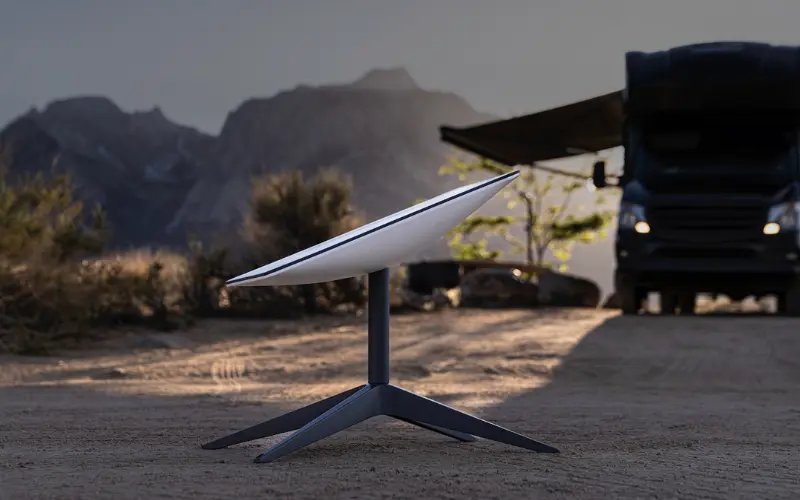
Does Starlink Have a Contract?
One of the best benefits of ordering Starlink is that it doesn’t have contracts. When you purchase the Starlink, you own every piece of equipment that SpaceX sends you. You aren’t locked in to use the Starlink service for any pre-determined months.
As a user, you only have to pay a monthly subscription fee, and that’s it. You can cancel the Starlink internet any time you want without any monetary penalty. You don’t have to return the Starlink dish, router, and cables. It’s all yours.
This contractless internet is an industry first.
In contrast, HughesNet and Viasat have 24-month contracts. They will charge you a hefty fee if you cancel early. Moreover, they will charge you more if you don’t return their equipment.
The cable internet, however, has a 12-month contract. Still, if you cancel early, they will penalize you. Moreover, you also have to return the modem and router they gave you.
Related : Starlink for RV and Campers: 9 Important Things To Know Before You Go Camping
Can Starlink Get Wet?
Both the Starlink dish and router have an operating temperature of -22°F to +122°F (-30°C to +50°C) and are IP54 rated. These are waterproof and dust resistant. Therefore, the Starlink dish will operate perfectly well even when wet. It can also withstand hail, snow, and heavy showers.
The first generation Starlink router wasn’t weatherproof. However, SpaceX discontinued it a few years ago.
The current generation Starlink router can be placed outside because it’s IP54 rated. Therefore, it can also withstand rain and snow.
Does Starlink Get Affected by Weather?
Starlink does get affected by the weather, but it depends. The following paragraphs discuss how clouds, light rain, heavy rain, snow, and moisture affect Starlink’s internet.
Starlink dish is a phased array antenna and uses Ku and Ka transmission bands. Therefore, clouds do not affect the Starlink internet service. On a cloudy day, you will not face any service deterioration.
Snow and light rain also don’t affect Starlink’s service. Even on a heavy snowy day, you will not face any outages. Moreover, as the Starlink dish has a built-in heater, any snow that falls on the antenna will melt away.
However, even though light, fluffy snow doesn’t affect Starlink, heavy snow (packed with water) can affect your internet speed. But Starlink will not disconnect entirely. You will only face service degradation.
Heavy rain and moisture can and will affect Starlink. The satellite signal will deteriorate during heavy rain, and the SNR will become too high. As a result, internet speed will worsen significantly. If there is too much moisture in the air and it pours, you will lose Starlink internet until the heavy rain passes.
However, different customers will experience these weather events differently.
SpaceX is still building the Starlink satellite constellations. When complete, it will have more than 40,000 satellites. So far, SpaceX launched a couple of thousands of satellites. Therefore, the service will improve as more satellites are added to the network.
Therefore, if you purchase the Starlink but face service degradation during snow (which should not happen), it will go away as more and more satellites are added to the constellation.
Moreover, Starlink needs ground stations. These ground stations beam internet to the satellite, and the satellite beams internet to you. If the area where the ground stations are located is experiencing bad weather, your internet will also get affected.
The first generation Starlink satellites didn’t have inter-satellite laser connection. Only the second-generation satellite has the laser link. Therefore, until most of the satellites in orbit are the second generation, bad weather in the ground station area will deteriorate the internet on the user terminal.
Related: 10 Things You Should Know About Starlink Dish and Router
Will My Starlink Work If I Move?
If you move to a new house in another city or another state, you can take your Starlink with you. It will work everywhere on the same continent. However, there are several critical things to consider.
SpaceX provides two service packages for consumers:
- Residential Starlink
- Starlink for RV
Which package is better for you depends on whether you are moving temporarily or permanently and whether you have good cable internet in your home or not.
Residential Starlink:
The residential Starlink is tied to your home address. Typically it will only work where you live and its surrounding areas (usually a 15-mile radius). Starlink will warn you to use Starlink at your registered address if you go too far.
However, residential users can take their Starlink with them during camping, vacations, or travels. For this, you must add a $25 per month portability add-on package. Once you complete your vacation and come home, you can cancel the portability add-on.
However, this is valid for only temporary movement.
Internet speed is the main difference between using Starlink at a registered address and a different location with the portability add-on.
Starlink always prioritizes residential users for internet speed. Therefore, in the portability mode, you will get slower internet in congested areas and cities. It will also become slower during peak hours (5 PM to 10 PM).
If you permanently move to another house or another state, you must update your service location. However, whether you will get Starlink internet or not at your new address depends on the number of users in that particular area.
Starlink provides internet service for a pre-determined number of users in a particular region. Therefore, if you move to an area where they already have too many customers, Starlink will put you on a waitlist.
You have to wait with other Starlink order holders to activate your service. In some congested cities, you may never get Starlink service again even though you have Starlink equipment.
Starlink for RVs:
If you have cable internet for homes and want to purchase Starlink for your RV, campers, or vacation homes, the “Starlink RV” package is better for you.
It has several benefits.
The residential Starlink service can’t be paused or unpaused. A user can only cancel the service.
However, the Starlink for RV subscription can be paused and unpaused. Therefore, before you start your trip, you can unpause the service and pause the service again after coming home.
Starlink for RV works anywhere on the same continent. For example, if you purchase Starlink in the USA, you can visit Canada, and it will still work there (provided you stay less than two months there).
Related: Can You Paint the Starlink Dish and Bury the Cable? — 6 Things You Should Know
Does Starlink Work Around Trees?
One of the critical drawbacks of Starlink is that it doesn’t work around trees. Trees and foliage will block Starlink’s satellite signal and severely affect the internet service quality. If the foliage is too thick, Starlink will not work at all.
For proper operation of the Starlink, it needs a clear view of the sky. Therefore, if you live in an area with lots of trees, you will have difficulty getting Starlink working.
Most Starlink users put their antennae on top of the house roof to get a better satellite signal. Some people cut trees.
If you live in an area where you don’t have a clear sky view, and it’s impossible to cut trees, we suggest you not buy Starlink.
Can I Turn Starlink On and Off?
If you are a Starlink Residential or Business user, you can’t turn on or off the subscription. You only can cancel the service.
However, Starlink for RV users can pause and unpause their service anytime they want. There are no restrictions. RV users also don’t need to cancel their service.
Are Starlink Antennas Heated?
Starlink antennas work perfectly well in winter weather. It has a built-in heater that melts and removes snow. It’s all automatic. A user has to do nothing. The Starlink dish automatically detects snow and activates the heater.
Therefore, people who live in cold weather and receive a lot of snow don’t have to worry about Starlink’s operation and performance. You can safely mount it on top of your house roof.
Starlink dish also has a hydrophobic coating that removes water.
However, winter customers have to remember a few things.
If your area receives a lot of snow, mount the Starlink dish high from the base (ground or roof). It’s because the Starlink dish will melt snow. And due to extreme cold, this water refreezes again and creates a frozen waterfall effect.
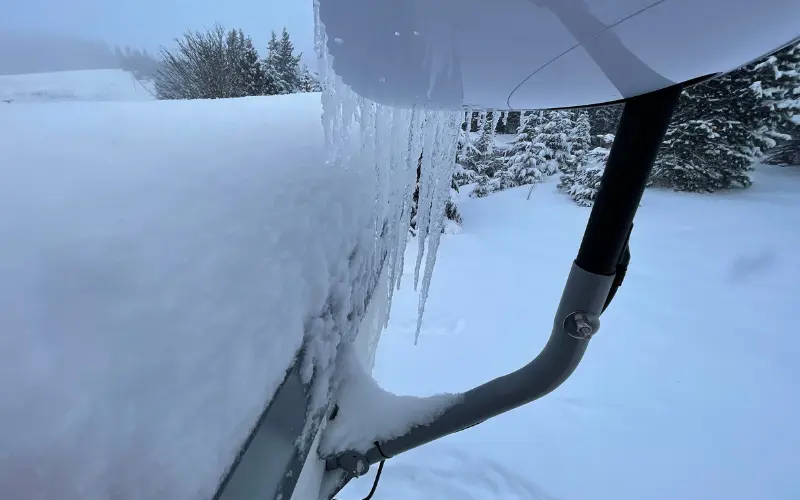
The above image shows that water from the Starlink dish has refrozen. If you don’t mount your antenna high enough, the entire dish will get stuck with icicles.
The Starlink dish has built-in motors that move and rotate the antenna. The motor will get damaged if it freezes with some structures due to icicles.
Does Starlink Have Unlimited Data?
Starlink provides unlimited data. There’s no data cap. They also don’t throttle internet speed if you use too much internet. SpaceX has also indicated that Starlink will always have unlimited data.
Even though Starlink doesn’t limit data, if you live in an area with too many Starlink users, the internet speed can vary between 50 Mbps to 100 Mbps.
Furthermore, if you use the “Starlink for RV” or portability feature, your speed can slow down as low as 5 Mbps.
However, service at HughesNet and ViaSat is even worse.
HughesNet and Viasat don’t have actual unlimited data. Even though these companies claim that they provide unlimited data, it’s inaccurate. At these companies, if you go over your data limit, they will throttle your speed.
Is Starlink Transferable?
When you purchase the Starlink equipment, SpaceX permanently gives you the Starlink dish, router, and cables. They transfer those products’ titles to you. Therefore, you can sell that equipment.
Even though you can transfer the Starlink dish and router to a new user, you can’t transfer the subscription. You have to contact Starlink customer care on behalf of your buyer to transfer the subscription. However, the entire process will take less than one day.
Does Starlink Have a TV Service?
HughesNet, Viasat, and other satellite internet providers have internet and TV service. However, Starlink doesn’t offer any TV service. It only provides the internet. They also don’t plan to add TV channels in the future.
Even though you can’t watch TV through Starlink, you can watch it through YouTube or Hulu Live.
YouTube has a TV service that provides hundreds of Live TV at a reasonable cost.
Hulu also has an excellent live TV streaming package.
Therefore, even though Starlink doesn’t give you TV channels, you can watch it through the internet from YouTube or Hulu.
Does Starlink Offer Phone Service?
Almost every internet provider, such as optimum, spectrum, and Verizon, offers phone service with their cable internet. Even the legacy satellite internet companies such as HughesNet and Viasat offer voice plans. However, Starlink doesn’t have phone service.
In many areas where Starlink will be most useful, a phone line from the provider is crucial. Because in most rural areas, even the cellular phone doesn’t work properly. However, Starlink doesn’t offer phone service and doesn’t have any plans to add one.
However, WiFi calling does work over the Starlink internet due to low latency. Therefore, if you have a cellular phone service that offers WiFi calling, you can use the Starlink internet to receive and place phone calls even if you don’t have a cellular network in your area.
Does Starlink Come With a Roof Mount and Router?
SpaceX ships their Starlink with everything you need to get internet access. The package contains a dish, a router (with built-in WiFi), a cable, and a power cord. Therefore, you don’t need to purchase a router.
However, the second-generation router that SpaceX is shipping doesn’t have an ethernet port. It only has WiFi.
If you need an ethernet port, you must bypass the official router and use your router, which you have to purchase from the market. In most scenarios, however, you don’t need to do it because the Starlink router can transfer data at up to 1 Gbps speed.
Can I Install Starlink Myself?
SpaceX designed the Starlink so that anyone can install it. There’s no need to hire professionals. The entire kit is plug-and-play.
Starlink installation is straightforward. Here are the steps.
- Find a place where you have a clear sky view.
- Place the Starlink dish on the stand with the flat surface facing upward.
- Connect the cable with the router.
- Connect the power cable to the router.
- Wait a few minutes.
- Connect to your Starlink router WiFi to get internet.
As you can see, unlike HughesNet and Viasat, anyone can install Starlink. You don’t have to hire anyone unless you plan to install the Starlink dish on your house roof for better satellite signal reception.
Related: Starlink Installation and Maintenance (6 Important Things)
Key Takeaways:
- Starlink doesn’t have a contract. You are free to cancel the service anytime you want without any monetary penalty from SpaceX.
- Starlink will work anywhere within the same continent. It works across the state line and cross-country border.
- Starlink doesn’t work around trees. You will face severe service degradation or service dropout due to obstruction.
- Residential and Business Starlink users can’t pause their service. Their only option is to cancel. Only Starlink RV users can pause-unpause their subscription.
- Starlink dishes are heated. Thus, snow will not build up on the antenna.
- Starlink has unlimited data. SpaceX doesn’t put any data cap.
- When you purchase Starlink, Spacex transfers the title of the equipment to you. It’s your personal property. You can move or sell the equipment to whomever you want.
- Starlink dish and router are IP54 rated. Therefore, these are waterproof and dust resistant. Thus, it can get wet.
- Starlink doesn’t have any TV service.
- Starlink doesn’t offer mobile service.
- The Starlink package comes with a WiFi router. But they don’t provide a roof mount. You have to purchase the Starlink roof mount additionally from the market.
- Cloud, snow, and light rain doesn’t affect Starlink service. However, heavy rain and moisture in the air will degrade the Starlink internet. During a downpour, you may experience a service outage.
- SMART SPEAKERS
- NETWORKING & INTERNET
Can you Travel with Starlink? Best Options
Being a digital nomad at heart I always wanted to take my Starlink with me on my travels.
It took me a stupidly long time to realize that there are plenty out there looking at options to get a solid internet service during their travels, no matter on air, road, or at sea.
Not a lot of people know that Starlink does have a few cards that can help in enabling just that, and this has motivated me to write this article on how you can travel with a Starlink connection.
To travel with Starlink, Starlink RV or the portability feature for Starlink Residential are the best choices. Starlink also provides options for boat and aircraft owners with their Starlink Maritime and Starlink Aviation plans.
Travelling on Road with Starlink RV

By road is the most common method of travel for many, and Starlink has quite a few plans that cater to such an audience.
Starlink has Starlink RV , which is specifically designed for those who are out and about on their RVs and require a solid internet connection.
Starlink does have two plan options for Starlink RV: A plan with a regular rectangular Starlink RV dish, and a plan with a high-performance dish on board
There is also a workaround option where you can temporarily take your existing Starlink Residential connection on the road by enabling a feature called Portability
Here is a brief comparison of the options for users who want to utilize a Starlink connection for their on-road travels:
Starlink RV with Rectangular dish

This is the most popular Starlink RV plan, and the brief chart below summarizes every aspect that this plan offers for its users:
The Starlink RV basically is Starlink Residential for remote users but with a few downgrades to counter its nomadic nature
This is reflected in the hardware, which is almost identical to what you receive with a Starlink Residential connection.
But the similarities end there.
Starlink RV costs a bit higher, at $135 per month instead of Starlink Residential's base $90.
This service fee can be paused and enabled as per your needs, in case you take a break from your regular travelling spree.
There is also no waiting list for Starlink RV customers, unlike Starlink Residential. This means you can utilize the Starlink service immediately after subscribing.
But this does come with a slight downgrade, in that you will need to be content with a deprioritized service.
This effectively means that the Starlink Residential customers around you will have more priority for the Starlink connection, leading to potentially slower speeds.
This is entirely dependent on the usage in the particular cell that you are currently hosting the Starlink connection from.
Since your service is already deprioritized, there are no soft data cap s for Starlink RV connections.
One key factor that might affect your usage of Starlink RV is that the regular plan does not support internet connectivity when in motion.
This means that you will have to be stationary in order for your Starlink dish to connect to a Starlink satellite constellation above.
Coming to its performance, it is entirely dependent on the location you try to connect your Starlink from.
We noticed high peaks and low troughs with our testing, with speeds ranging as low as 9 Mbps and as high as 220 Mbps.
The upload speed situation was surprisingly more stable, hovering around 6 Mbps on average.
The power consumption charts were also pretty decent, with similar power consumption reports as of a regular Starlink Residential connection.
Starlink RV with Flat High-Performance dish

This is Starlink's higher tier option for Starlink RV customers who want better performance and features than their regular counterparts.
The flat high-performance dish is a redesign of the high-performance dishes that Starlink provides for their Business and high-end Residential plans for better speeds.
Given below is a brief outline of what you can expect from a Starlink RV connection with a flat high-performance dish:
The primary difference that the Starlink flat high-performance plan has over the regular version is the ability to connect to a Starlink satellite when in motion.
This is a huge boon for those who are constantly moving and require an active connection when literally on the road.
This does come at a steep cost, as the $2500 hardware fee is a hard pill to swallow.
The portability is also in question here, as the Starlink dish needs to be permanently fixed to your RV.
The high-performance factor does also aid in increasing power consumption, so you might need to frequently juice up your external power source when on the road.
But on the bright side, you get much better speeds overall and that is all that matters for most of the folks that opt for this plan.
Travelling on road with Starlink Residential and Portability

Another option for road dwellers is to just simply take your Starlink Residential connection with you when you travel!
Yes, this is an option that Starlink has provided, but it does come with its fair share of challenges.
To do this you need to enable the Portability feature, where you can temporarily change your service address for a small fee.
Here is a brief rundown of all the aspects you can expect out of simply travelling with your Starlink Residential connection with the portability feature enabled:
If you are already a Starlink Residential customer and would like to take your Starlink on a trip, this might be the best option for you.
You get a similar experience as the Starlink RV, and you will have to shell out a nominal $25 as a portability fee for the month that you are travelling.
If you are traveling with your Starlink Residential connection, it makes sense to get an additional Starlink cable for your travel purposes.
This ensures that you will not need to tamper with your existing Starlink cable that you have set up at your home, and you only need to detach the dish from the connection.
The drawback to this method is that you cannot stay for too long (more than 2 billing cycles) at your temporary location or Starlink can change your service address permanently.
With Starlink RV, you can stay as long as you want at any location.
Travelling on the sea with Starlink Maritime

If you plan on taking your regular Starlink Residential or RV connection on a boat, you might be out of luck.
But if you are someone who owns a boat, and wishes to implement a satellite internet connection for use while at sea, Starlink has the Maritime plan .
Here is a brief rundown on what you can expect from a Starlink Maritime plan:
The $10,000 hardware cost might seem absurd at first glance, but it is inexpensive compared to competing satellite internet services for use on boats.
Travelling on air with Starlink Aviation

This is similar to a Starlink Maritime connection but intended for aircraft when they are on air.
This has a much more commercial purpose, as airlines can utilize this service for providing internet for their passengers on board.
This is not restricted to businesses and enterprise solutions, so you can definitely implement the same for your personal aircraft.
Here is a brief rundown on the features and aspects that Starlink Aviation provides:
Challenges to using Starlink while Travelling

Starlink will always work best when it is used from a particular service address cell .
Travelling with your Starlink is still affected by a lot of factors that can deteriorate your experience with Starlink in general:
Weather and clear skies
Weather is one factor that can impact any Starlink connection since the Starlink dish needs to establish a clear communication channel with a Starlink constellation above.
If the skies are cloudy or if the area around the dish is covered by tall trees , the chances of establishing this said connection will further diminish.
Starlink dishes are built to withstand a lot of weather-related instances, but you will definitely feel a dip or a complete drop of connection in such conditions.
Travel restrictions
Do make sure to check with Starlink support or its terms and conditions of the possible locations you can travel to with your Starlink connection.
Typically in the US, you are allowed to travel anywhere as long as it is within the continent of your shipping address.
If you are utilizing the portability feature, there is a chance that your service address might get updated to the temporary address you provided if the service is utilized for more than 2 months.
External Power
The external power supply is one area that a lot of users falter on when it comes to powering their Starlink dish.
Make sure that your external power supply can power your Starlink dish as per your charging routine.
Deprioritization and Travelling between cells
A factor that many forget is that when you leave your service address location, you will be accessing data in a deprioritized fashion.
This means that when you move from one service cell to another, you will face speed changes depending on the Starlink traffic of said location.
Final Thoughts

If you have further queries regarding Starlink and its travel capabilities, you can seek the help of Starlink support or their FAQ page .
I hope my article on whether you can travel with Starlink, and all the challenges you might come across has been a worthwhile read.
Have a good day!
Frequently Asked Questions (FAQ)
Can starlink be used for international travel.
Starlink can only be used within the continent of your shipping address, and cannot be used for international travel.
Can I purchase more than one Starlink connection?
Starlink allows multiple Starlink dishes to be connected to a Starlink account, with the secondary options available being Starlink Residential or Starlink RV.
You May Also Enjoy Reading
- Starlink Installation and Set Up: Easy Guide [2023]
- Starlink Disadvantages: Read Before Buying!
- Does Starlink offer Satellite Phone Service? [2022]
- Will Starlink be Free Ever? What's Likely [2022]
- How to Skip Starlink Waitlist [2022]-What Works?
- Is Starlink Good for Gaming? The Truth [2022]
- Starlink vs 5G Home Internet [2022]: Which is Better?
Hey! I'm Doug, My passion for tech started by fixing phones and computers for my friends and family. I started Blinqblinq to give reliable tech advice to anyone who needs it, for free! If you have questions on anything tech-related, feel free to contact me.
Related Posts
![does starlink travel with you Is Starlink Available in My Area? How to Check [2023]](https://blinqblinq.com/wp-content/uploads/2022/09/1-5-450x300.jpg)
Is Starlink Available in My Area? How to Check [2023]
![does starlink travel with you Starlink vs Viasat: Big Difference? [2023]](https://blinqblinq.com/wp-content/uploads/2022/09/1-16-450x300.jpg)
Starlink vs Viasat: Big Difference? [2023]

Starlink Flat High-Performance Dish for RV: Guide
What's the deal with the flat high performance dish?
![does starlink travel with you How to Skip Starlink Waitlist [2023]-What Works?](https://blinqblinq.com/wp-content/uploads/2022/09/1-9-450x300.jpg)
How to Skip Starlink Waitlist [2023]-What Works?
![does starlink travel with you How to Remotely Connect to the Starlink App [2023]](https://blinqblinq.com/wp-content/uploads/2022/09/1-18-450x300.jpg)
How to Remotely Connect to the Starlink App [2023]
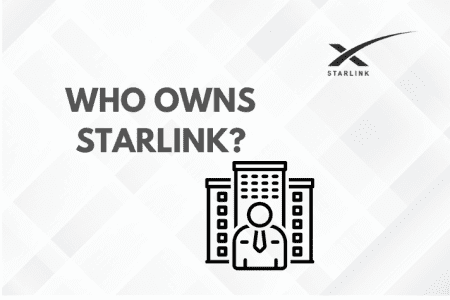
Who Owns Starlink? Everything You Need To Know!
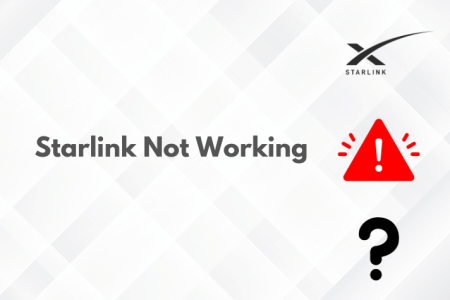
Starlink Not Working: How To Fix
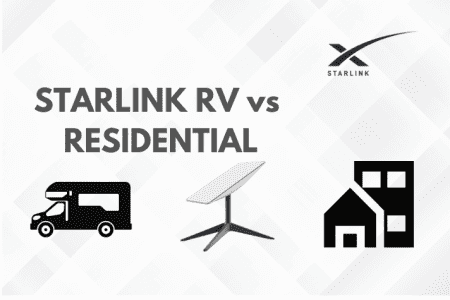
Starlink RV vs Residential: Which is Better for You?
Which one do you need?
The comments are closed.
- Getting Results.
- Newsletters
WEATHER ALERT
A beach hazard statement in effect for Coastal Volusia Region
Spacex launches another starlink mission from florida coast, launch took off at 9:40 p.m..
Brandon Hogan , Digital Editor
BREVARD COUNTY, Fla. – SpaceX on Friday night successfully launched another batch of Starlink internet satellites aboard a Falcon 9 rocket from Florida’s Space Coast.
The launch went off at 9:40 p.m. from Space Launch Complex 40 at Cape Canaveral Space Force Station, according to SpaceX.
Recommended Videos
Prior to the launch, the 45th Weather Squadron forecast an over 95% chance that it would experience favorable weather conditions.
Twenty-three more Starlink satellites made the trip to low-Earth orbit on the Falcon 9 rocket, utilizing a first-stage booster previously used in such missions as Inspiration4 , Ax-1 , OneWeb Launch 17 , and 12 other Starlink flights .
The booster, after making its 20th flight, is set to land on the “A Shortfall of Gravitas” drone ship in the Atlantic Ocean.
Get today’s headlines in minutes with Your Florida Daily :
Copyright 2024 by WKMG ClickOrlando - All rights reserved.
About the Author
Brandon hogan.
Brandon, a UCF grad, joined the ClickOrlando team in November 2021. Before joining News 6, Brandon worked at WDBO.
RELATED STORIES
Spacex launches ‘bandwagon-1′ rideshare mission from florida coast, watch again: spacex launches satellites from florida’s space coast, watch again: spacex launches more starlink satellites from florida coast, 1 dead, 3 wounded in shooting near orange county apartment complex, woman, car missing after apparent carjacking at winter springs intersection, video shows possible carjacking at winter springs intersection, video shows shooting in ocoee parking lot, orlando chapter of zeta phi beta, inc to host bingo for handbags.
Covering the business and politics of space
Vast to use Starlink for space station broadband communications

- Click to share on X (Opens in new window)
- Click to share on Facebook (Opens in new window)
- Click to share on LinkedIn (Opens in new window)
- Click to share on Reddit (Opens in new window)
- Click to email a link to a friend (Opens in new window)
- Click to share on Clipboard (Opens in new window)

COLORADO SPRINGS — Commercial space station developer Vast will use SpaceX’s Starlink constellation to provide broadband connectivity for its Haven-1 station launching next year.
Vast announced April 9 that it will install laser intersatellite link terminals on its Haven-1 station to enable communications with Starlink satellites. The agreement between Vast and SpaceX extends to future space stations Vast plans to develop.
Max Haot, chief executive of Vast, said in an interview during the 39 th Space Symposium that his company will use terminals supplied by SpaceX. Gwynne Shotwell, president of SpaceX, announced at the Satellite 2024 conference March 19 that SpaceX would sell laser terminals it developed for Starlink to other customers, a product offering she dubbed “Plug ’n’ Plaser.”
Vast will install four such terminals on Haven-1. “It should give us full coverage,” he said, based on the orbit of Haven-1 and its relationship to the Starlink constellation. Those laser links would augment traditional radio-frequency communications with ground stations and through Inmarsat satellites.
The Starlink terminals will provide Haven-1 with up to one gigabit per second connectivity to and from the station. “There’s nothing that we can think of that’s going to use more than that,” he said, including requirements for crews and payloads as well as 20 cameras mounted inside and outside the station.
“You can open your laptop, iPad or iPhone and call your family, do a livestream for outreach or watch a movie if you want,” he said of the experience crews on Haven-1 would have. He argued it would be a competitive advantage for Vast over alternatives, like the “technically inferior” connectivity currently available on the International Space Station.
Vast announced Haven-1 last May , with a goal of launching the single-module station as soon as August 2025. Haven-1 will be able to accommodate four-person crews for short-duration missions, with a total stay time of 40 days. The station’s payloads can also be operated while the station is unoccupied.
Haot said that development of Haven-1 remains on schedule. The company, which had about 120 people around the time it announced the station, has grown to 350 employees. He projected the company reaching 650 employees by the end of the year and 800 by the time Haven-1 launches.
One change since the announcement of Haven-1 is a change from stainless steel to aluminum for the structure of the station. “We felt that it was going to be faster and much lower cost to do additional volume. It turned out to be a lot slower,” he said of stainless steel. The challenges with stainless steel included mass margins on the Falcon 9 rocket launching Haven-1 as well as specialized tooling needed to produce the components.
Vast starting studying aluminum last November and decided last month to switch to it. “Aluminum is a proven method and we were able to master it in-house really quickly,” he said. “We’re now back on track with our launch date.”
Vast has not announced any customers yet for Haven-1 but Haot said the company had many prospective customers in its pipeline, with a focus on sovereign clients, or international governments, with some private customers as well. “As we are showing progress to NASA and to everybody else, I think the level of credibility and interest keeps increasing.”
Vast does not have a contract from NASA’s Commercial Low Earth Orbit Destinations, or CLD, program, but does have an unfunded Space Act Agreement awarded last year that gives the company access to NASA expertise and data. The company is planning to bid on the next phase of the CLD program as well as future private astronaut missions to the ISS .
“The main reason we are doing it is training for our team and building our relationship with NASA,” Haot said of Vast’s plans to bid on the next ISS private astronaut mission opportunities NASA offers. “A space station builder can benefit from the ISS experience before you build the replacement for it, and I think that’s the way NASA sees it too.”
Jeff Foust writes about space policy, commercial space, and related topics for SpaceNews. He earned a Ph.D. in planetary sciences from the Massachusetts Institute of Technology and a bachelor’s degree with honors in geophysics and planetary science... More by Jeff Foust

Sign up for a SpaceNews newsletter
Get top stories, military space news and more delivered to your inbox.

11 Things You Should Never do When Booking a Flight
Posted: February 20, 2024 | Last updated: February 20, 2024

Flight Fails
While we tend to associate traveling and going on vacation with hefty expenses, it doesn't always have to be that way. With a combination of thoughtful planning and a few clever tricks up your sleeve, you can enjoy a memorable trip without draining your wallet.
Since the most expensive part of a trip is usually securing plane tickets, figuring out how to work around this financial hurdle is conquering half the battle. From forgetting to set price alerts to booking too early, here are 11 mistakes to avoid while buying plane tickets.

Not Having Flexible Travel Dates
While this strategy won't work for those who have tight travel plans or can only get specific days off, being flexible with your travel dates can help you score cheaper plane tickets. Sometimes changing your departure or return dates by a day or two can result in surprising savings. Online platforms such as Google Flights , Kayak , and SkyScanner provide convenient tools that allow you to explore different dates, destinations, and prices.
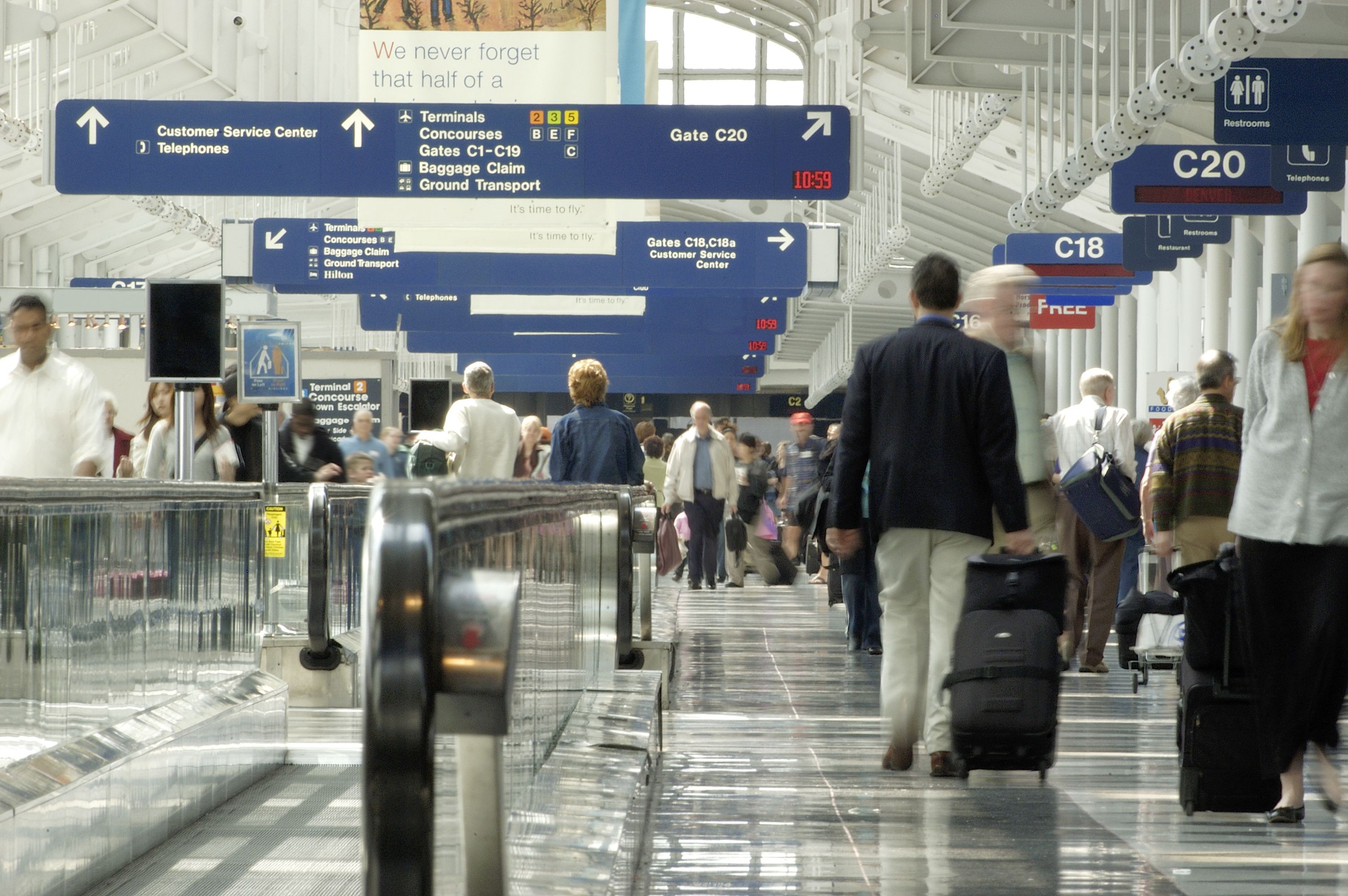
Buying Tickets on the Wrong Days
Buying plane tickets on weekends when demand is higher will likely cost you slightly more compared to booking during the week. You may have heard from frequent travelers that Tuesday is the best day to buy plane tickets. According to a study conducted by Google , tickets were indeed found to be 1.9% cheaper when booked on Tuesday, Wednesday, or Thursday, compared to the weekend. More significantly, the study found that flying during the week was approximately 12% cheaper than weekend flights.

Avoiding Red-Eyes
Red-eye flights — which are scheduled to depart late in the night and arrive early in the morning — are typically more affordable compared to regular flights due to their less desirable travel times. While waking up in the middle of the night to catch a flight can be exhausting, it does come with a few perks on top of helping you save money, like fewer crowds while going through TSA.

Not Comparing Prices at Nearby Airports
Another good way to score cheaper plane tickets is to broaden your search to include nearby airports — especially if your departure or destination city is located close to airports that serve as connecting hubs. Chances are higher that you'll be able to snag cheaper tickets at a major airport compared to a smaller one. Just be sure to factor in transportation and accommodation costs to determine whether the savings are worth the added travel time.
For more great travel tips and money-saving advice, please sign up for our free newsletters.

Always Buying the Cheapest Fare
While it may be tempting to click on the most basic economy fare, it may not always be the cheapest choice. Budget airlines typically offer bare-bone amenities that do not include add-ons like seat assignments, checked bags, and even carry-on luggage. When you factor in these added expenses, they could end up costing more than the main cabin fare from a legacy airline. To avoid falling prey to this, familiarize yourself with the carrier's rules and carefully read the fine print before deciding to buy.

Not Taking Advantage of Credit Card Rewards
If you travel often for work, you're likely already familiar with credit card programs that allow you to accumulate points and miles through your travels. Leading travel credit cards, such as Chase Sapphire Preferred and Capital One Venture, allow you to earn generous airline points and miles with everyday purchases. Check with your credit card provider to see how you can maximize rewards to save on various travel expenses, including plane tickets, hotels, car rentals, and more.
Related: TikTok Travel Hack Shows How to Score Free SkyMiles (And It's SO Easy)

Not Setting Up Price Alerts
If your travel plans are flexible, setting price alerts through sites such as Hopper, Kayak, and Google Flights can help you find more affordable plane tickets. When you set an alert, you'll be notified via text or email when a cheap deal rolls around. Setting price alerts can also be helpful for booking last-minute tickets, as airlines will sometimes slash prices to try and fill as many seats as possible on upcoming flights.
Related: 12 Ways to Snag Cheap Last-Minute Flight Deals

Booking Too Early
If you've been told to "buy your tickets as early as possible," I hate to break it to ya, but that belief is outdated. When you book too early, airlines may not have released their most discounted fares yet, leaving you to pay more than necessary. "Booking more than six months ahead can cost you since airlines set their initial prices conservatively," says Patrick Surry , chief data scientist at Hopper. The sweet spot to buy is generally 76 days before your trip, a study by CheapAir.com found .
Related: How To Save Money on Flights Using Google's Price Guarantee Program
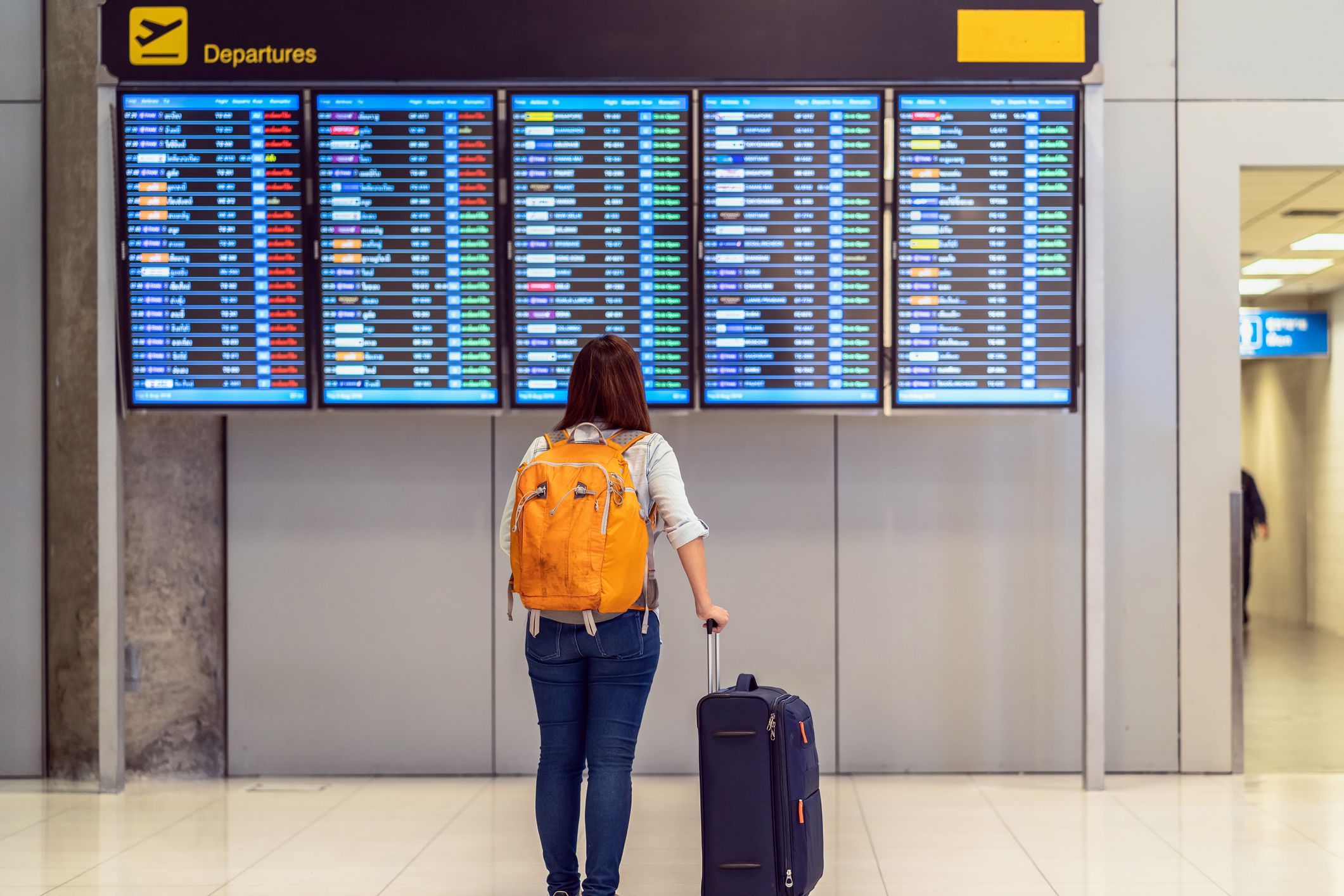
Not Booking Legs Separately
If you have a more complex itinerary that requires multiple layovers, booking each leg separately can offer larger savings than if you were to buy the first option that airlines generate. With this strategy, you might hop on a flight on one airline to a larger airport, and then fly out on a different airline to your final destination. Just be sure to allow ample time in between flights in case of delays or other unforeseen circumstances.
Related: Why Is Spirit Airlines So Cheap — and Is It Safe?

Overlooking One-Way Tickets
While opting for a round-trip ticket is generally more affordable and easier to deal with, there are instances where booking separate one-way flights can unveil unexpected savings — especially if you're open to flying with different airlines. This strategy tends to be most effective when you're flexible with your choice of airlines for the arrival and departure legs of your travels.

Not Calling In
Sometimes calling an airline directly to inquire about cheap last-minute deals or same-day flights can result in surprising savings. Some travel agencies also offer bundle vacation deals that include airfare and living accommodations that could fit your travel plans and budget. If an airline is dealing with last-minute cancellations, you may even be able to snag tickets at a very good price, so don't be shy about asking; you have nothing to lose by giving it a try.
This article was originally published on Cheapism
More From Cheapism
- Net Winnings: The Best Seafood Restaurant in Every State
- 24 Best Places to Travel After Christmas
- From Crab Croquettes To McSpicy Paneers: Here Are 25 Fan Favorites From McDonald's International Menu
- 11 Things to Know About Costco Car Rental
- Is Spirit Airlines Safe, and Why Is It So Cheap?
Like Cheapism's content? Be sure to follow us .
More for You
World's oldest conjoined twins, Lori and George Schappell, die at age 62
Donald Trump Could Make 'Extreme Decision' to Trigger Trial Delay: Attorney
Warning for parents after Florida mom finds AirTag in son's sneaker
K-Pop Singer-Songwriter Park Boram Found Dead at 30
New doc uncovers racism and inappropriate behavior at popular retailer
Vladimir Putin says 'just three things' stop Ukraine war ending as he's 'ready for peace'
Tesla Owner Calls Police on Rivian Driver Using Supercharger
4 Things You Should Never Cook in Cast Iron
Walt Nauta's Unsealed FBI Interview Raises Questions
Dr. Phil shuts down DEI guest advocating 'equality of outcome:' 'Been tried, didn't work, called Marxism'
A major Burger King franchisee in California says he can't roll out order kiosks fast enough due to the state's new $20 fast-food minimum wage
27 Side Characters That Stole The Spotlight
Secrets of ancient Herculaneum scroll deciphered by AI
Ohio city gave out free eclipse glasses — but they didn’t work
Tech trick: How to tell who’s calling when you don’t recognize the phone number
11 Rude Hotel Habits You Should Stop ASAP
Chiefs' Travis Kelce chugs beer moments before receiving college diploma
25 movies that will really mess with your head
Stolen medals of war hero who co-invented the tank found 50 years after theft
I moved from California to Tennessee for my husband's job. We can finally save money, but it's been a major culture shock.
'Expensive in every way': What travelers should expect this summer
Summer travel in 2024 will be "expensive in every way," said Katharine Nohr. And she should know.
She's planning a two-week adventure to Europe in June, which starts with a marathon flight from Honolulu to Zurich, where she'll speak at a conference. Then, she's hopscotching across Europe – to Vienna, then on to the Olympics. Nohr made plans to be in Nantes, France, to watch a soccer game, in Lille for basketball, and in Paris for gymnastics, boxing, and swimming.
Check out Elliott Confidential , the newsletter the travel industry doesn't want you to read. Each issue is filled with breaking news, deep insights, and exclusive strategies for becoming a better traveler. But don't tell anyone!
All told, it'll set her back five figures despite her best efforts, which include flying economy class and staying in the lowest-priced hotels.
"The trip is pricey, even with my efforts to economize," said Nohr, an attorney from Honolulu. "But it's a once-in-my-life adventure."
Flying cars are coming! Here's how they could change the way you travel.
'Flying feels different': Here's how air travel has changed recently
Summer travelers are pursuing exciting, expensive vacations
Nohr is part of a wave of travelers who are making big plans for this summer. The itineraries are exciting – and expensive.
Pretty much every barometer of travel intent is up for the summer travel season. Inflation and unemployment are low, and consumer sentiment and curiosity are high, fueling an unprecedented interest in travel during the summer of 2024.
"Bookings are rising," said Susan Sherren, who runs Couture Trips , a travel agency. "Unfortunately, hotel, tour, and air prices are not falling. So, if you plan on hitting the road this summer, make sure you are willing to splash some cash."
Travel companies say they're overwhelmed with summer reservations.
"The travel economy is booming," said Joe Ialacci, owner of Yacht Hampton Boating Club , a company that rents yachts in Sag Harbor, New York. He's seeing a 40% increase in rentals this summer compared to last year as Americans shift some of their vacation dollars to domestic destinations.
Prices aren't the only thing trending higher. People's expectations for their summer vacation are also higher than at any time since the pandemic, said Sangeeta Sadarangani, CEO of Crossing , a multinational travel agency headquartered in London.
"They're embracing the unknown," she said.
And one of the great unknowns is travel prices. How much higher will they be?
What will prices be like this summer?
It depends on where you're going. There's good news if you're traveling within the U.S.: flights and hotels are a little less expensive than last summer . But they're rising elsewhere. Here's the breakdown:
- Airfares are mixed. Domestic roundtrip airfares for summer will peak at $315 per ticket, according to the travel platform Hopper . Flights to Europe are cheaper, too. They've fallen 10% from last year to $882. But flights to South America are up 2% and flights to Canada have risen 7%. You'll pay an average of $708 to fly south of the border and $419 to head north.
- U.S. hotel rates are down. Domestically, they're about the same as last year at an average of $206 per night.
- Car rental prices are rising. Average domestic car rental rates are only up 3% this summer to $42 per day on a four-day rental, according to Hopper.
But you can avoid the high prices with a little strategic planning, experts say.
What to avoid this summer
American travelers are becoming more predictable in their summer vacation choices, said John Lovell, president of Travel Leaders Group . Immediately after the pandemic, they embarked on "revenge" vacations to far-flung locations. Now they're returning to more conventional vacations.
"We continue to see U.S. travelers heading back to the more traditional locations across Europe this year, like London, Rome, Athens and Munich," he said.
There are places that will be exceptionally busy – and exceptionally pricey – this summer.
- Paris during the Olympics. The Olympic Games are taking place in Paris this summer. Rooms are more than double the normal rates . which is typical of the Olympics. Paris is already crowded with tourists during the summer, so you can probably imagine what it will be like with the Olympics. Zut, alors!
- Taylor Swift is touring Europe this summer. Prices will be higher and the crowds will be denser. "If you aren't planning to attend one of her concerts, I recommend planning around those European cities when she's there," said Betsy Ball, co-founder of Euro Travel Coach . (Want to know if your schedules overlap? Here's Taylor Swift's concert schedule .)
- Other big summer events. Even if you steer clear of Taylor and the Olympics, you're still not out of the woods. There's the UEFA Euro 2024 football tournament in Germany in June. There's the Tour de France in July, which begins in Florence and finishes in Nice. France is also hosting the Paralympic Games in August and September, which will take place in Paris, Nice, Marseille and Bordeaux.
Air travel smells worse than ever. Here's how to fix it.
Pay less to fly: New strategies for finding cheap airfares now
When is the best time to book a 2024 summer vacation?
Since this is going to be a busy one, the sooner you book, the better. Hopper recommends buying your airfare two to three months before your departure for domestic flights, and for international – well, it's probably too late to get that rock-bottom fare. If you're reading this in April, you can still find something for late August or early September, according to its airfare experts.
As always, you can save money by booking a flight for midweek instead of on the weekend – and, of course, by keeping far, far away from the big travel holidays like Memorial Day, the Fourth of July and Labor Day.
Also, if you're going overseas, remember their holiday calendar is different. For example, half of Europe shuts down during August for summer vacation. It's worth a look-up, otherwise, you could face some real disappointments.
Strategies for traveling better during the summer
One tactic that consistently works is splitting your getaway into two sections. Take that required summer vacation with your family somewhere less expensive during the high season. Then, wait until shoulder season for the big trip.
That's what Ross Copas, a retired electrician from Tweed, Canada, is doing during the summer of 2024. It's a road trip across the northern U.S. by motorcycle – New York to Washington State, and then back east through Canada.
Then he's heading to Amsterdam in September for a 23-day European river cruise. He said the late summer getaway will be costly, but he doubts fares will fall anytime soon. "So price be damned," he added.
Actually, that's pretty smart. I took the same cruise he's planning on Viking River Cruises many years ago, and it was worth every penny.
With hotel rates rising in some places this summer, this is the right time to consider alternatives. Monica Fish, a writer from Glen Rock, N.J., is headed to Ireland to catch one of Taylor Swift's performances. She said hotel rooms in Dublin are overpriced if they're even available. But Fish found an affordable vacation rental.
"We just had to book it farther in advance than we normally would," she said.
Go ahead, follow the crowds this summer
I think it's fine to follow the crowds this summer. I'll be doing it. I'm planning to rent an apartment for a month in Switzerland with Blueground, a long-term apartment rental company. Then I'm crashing on a friend's sofa in Spain, then heading to Sweden to see other friends and visiting my brother in Finland. Yes, travel writers know people everywhere .
But don't follow the crowds off a cliff. There are places even I won't go. I might take the four-hour train trip from Zurich to Paris in June to check out my favorite patisseries, but I wouldn't go anywhere near the City of Lights during the summer games in July unless I made a reservation a long time ago.
And Taylor Swift? Puh-leeze. I'm more of a jazz guy.
Christopher Elliott is an author, consumer advocate, and journalist. He founded Elliott Advocacy , a nonprofit organization that helps solve consumer problems. He publishes Elliott Confidential , a travel newsletter, and the Elliott Report , a news site about customer service. If you need help with a consumer problem, you can reach him here or email him at [email protected] .
Specifications
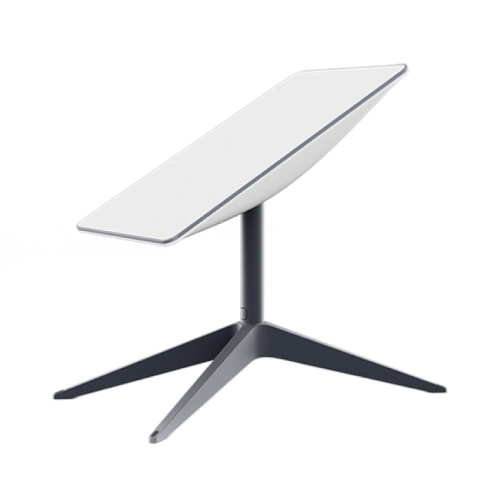
Standard Actuated
Applications.
Best for residential users and everyday internet applications like streaming, video calls, online gaming & more.
What's in the box
The Starlink Kit arrives with everything you need to get online in minutes.

Starlink Wifi Router

- Product Specifications
- Setup Guides
- Starlink App (iOS)
- Starlink App (Android)
- Setup Video
- Product 3D Models
Mounts & Accessories
Mounts designed to permanently install on a roof, pole, or wall to avoid obstructions are available for purchase on the Starlink Shop once your Starlink is ready to ship. Cable routing kits, extended cable lengths, mesh nodes, and ethernet adapters are also available.

IMAGES
VIDEO
COMMENTS
Starlink Roam costs $150 a month. That's $30 more than Starlink Residence every 30 days. But that's not the only cost to get Starlink Roam up and running. You'll also pay a one-time fee of $599 for the hardware that's required to connect to the SpaceX satellites which beam down Starlink's internet.
The Starlink Kit arrives with everything you need to get online in minutes. VIEW SPECIFICATIONS chevron_right. Starlink. Kickstand. Gen 3 Router. Starlink Cable. AC Cable. ... "This is a must have item if you need to work remotely or like to travel off the grid but still want internet availability! Works very well!" - Hoyung from United States .
Starlink Roam is an impressive bit of technology, but its shortcomings make it hard to recommend over the standard Starlink Residential plan. It makes for a powerful secondary internet plan for travel, if the large upfront investment is worth it to you, but we don't recommend it for your primary household internet plan. Get Starlink Roam.
Starlink makes it pretty easy to switch between the Global and Regional Roam plans. Let's say you typically only travel with Starlink in the US, but you have an upcoming trip to South America. You can switch to Global Roam to be able to use your dish outside of North America, and then switch back to the cheaper Regional plan when you return.
Andrew Blok. May 5, 2022 10:52 a.m. PT. Starlink customers can now temporarily move their internet service without changing their service address. Sarah Tew/CNET. Starlink, the satellite internet ...
Long term contracts prevent both you and Starlink from making sensible changes when necessary. With Starlink, it is a fair deal both ways. Starlink can adjust terms and pricing as needed, and you can cancel at any time, for any reason. ENGINEERED BY SPACEX. As the world's leading provider of launch services - and the only provider with an ...
A new feature called Portability (via The Verge) lets you take your Starlink internet with you. Per Starlink's FAQ, it "enables users to temporarily move their Starlink to new locations in order ...
Starlink is a revolutionary service that provides high-speed internet access almost anywhere on Earth. Whether you need internet for your home or for your travels, Starlink has you covered. Find out how you can get Starlink for your residential needs and enjoy fast, reliable and affordable internet.
Starlink for RVs is available for those who want Starlink while traveling to areas with slow or no broadband alternatives. The hardware costs $599 while the monthly service costs $135. US ...
For those who travel or have multiple homes and want to take their Starlink dish with them, there's a $135 a month "active" service that covers you for any area Starlink currently services (that's ...
The company is introducing a new add-on "portability" feature that, for an extra $25 per month, will let users connect to Starlink's satellites while traveling. If they're willing to cart ...
RV is designed for travelers who mainly use Starlink in different locations. If you are a full-time RV'er, van lifer, overlander, etc., Starlink RV is the best choice. Starlink RV costs $150/month, with a $599 equipment fee. Speeds range from 5-50 mbps. The hardware in the RV kit is identical to the Residential version.
According to computer models, at that time, Starlink satellites were involved every week in about 1,600 encounters between two spacecraft closer than 0.6 miles (1 kilometer). That's about 50% of ...
Starlink provides you with instructions for self-installation. However, if you do need help, feel free to check out our directory of Starlink installation services. Subscribers also do not have to commit to long-term contracts, meaning the Residential plan (and all others) can be canceled at any time. New customers receive a free 30-day trial ...
The rectangular version is 513 mm (20.2 in) tall, 303 mm (11.9 in) wide, weighs 2.9 kg (6.4 lbs) without the ancillary cable, consumes 50 to 75 watts of power, and is 100-240V AC powered. If you want to purchase additional accessories, such as an Ethernet adapter or different mounts, then you can do that within Starlink's dedicated online store.. You can, if needed, also order the High ...
Starlink is the best satellite internet in the market. This article answers 13 questions that will provide you with facts on every aspect of Starlink that many don't know. The information here will also save you money by giving you honest advice on whether Starlink is a good fit for you. These answers will also help you to install and ...
Assemble the Dish, Stand, and Cable. Once you unpack your Starlink kit, you need to assemble the dish and mounting base. Start by unplugging the connection cable from the dish: It arrives plugged ...
Here is a brief rundown of all the aspects you can expect out of simply travelling with your Starlink Residential connection with the portability feature enabled: Hardware cost (one-time) $599. Service fee (monthly) $90 or $120. Portability fee (monthly) $25. Can be paused.
If you need to travel globally, Starlink offers a $200 global plan for international use. ... Starlink does make specific claims about the download and upload speeds offered in its standard ...
7 CDs You Probably Owned, Threw Out and Now Are Worth Bank The Coolest Car From the Year You Were Born (1945-1995) I study people with high emotional intelligence for a living—8 things they ...
Here is everything you need to know about Starlink on cruise ships. How does Starlink work? Compared to standard communications satellites, which orbit from 22,000 miles away, Starlink's thousands ...
Easy to set up. Starlink is the first commercially available phased array antenna. The Starlink Kit arrives with everything you need to get online in minutes. It connects in minutes as long as it has a clear view of the sky. Starlink can withstand extreme cold, heat, hail, sleet, heavy rain, gale force winds, and even rocket engines.
That means tonight's Starlink countdown is now locked in to lift off at 5:12 a.m. without any delays, or else the launch must be postponed. SpaceX Starlink now available in 72 nations Update 4: ...
BREVARD COUNTY, Fla. - SpaceX on Friday night will attempt to launch another batch of Starlink internet satellites from Florida's Space Coast. The launch is scheduled for 9:22 p.m. from Space ...
The Starlink terminals will provide Haven-1 with up to one gigabit per second connectivity to and from the station. "There's nothing that we can think of that's going to use more than that ...
11 Things You Should Never do When Booking a Flight. While we tend to associate traveling and going on vacation with hefty expenses, it doesn't always have to be that way. With a combination of ...
You may be eligible for travel reimbursement if you pay expenses to and from your appointment. Learn if you're eligible and how to file a claim.
The itineraries are exciting - and expensive. Pretty much every barometer of travel intent is up for the summer travel season. Inflation and unemployment are low, and consumer sentiment and ...
The Starlink Kit arrives with everything you need to get online in minutes. Starlink. Base. Router. Starlink Cable. 15.2 m (50 ft) AC Cable. 1.8 m (6 ft) Starlink. Base. Router. Starlink Cable. 15.2 m (50 ft) AC Cable. 1.8 m (6 ft) Starlink. Antenna: Electronic Phased Array: Orientation: Motorized Self Orienting:
NASA also said in its statement, "Traveling towards the center of the path of totality — even a mile or two — will quickly increase the length of totality that people can see.". And ...